Carrie Yamaoka is an interdisciplinary artist whose work ranges across painting, drawing, photography, and sculpture. She engages with the topography of surfaces, materiality and process, the tactility of the barely visible and the chain of planned and chance incidents that determine the outcome of the object. Her work addresses the viewer at the intersection between records of chemical action/reaction and the desire to apprehend a picture emerging in fleeting and unstable states of transformation. Her material engagement and rule-breaking strategies embrace accidents and dissolve binaries, such as improvisation/intention, methodology/intuition, and surface/depth. Toggling between visibility and invisibility, overlaying legibility and illegibility, breaking apart and recomposing, Yamaoka’s work is in a constant state of mutation.
In the 1980s and early 1990s, Yamaoka engaged directly with erasures, in text-based paintings, darkroom photographic processes, and mirror surfaces. Through recuperation of typewriter correction ribbons that registered erased words, through redaction and removal via chemical stripping, these gestures served as powerful metaphors, making visible what has been erased in our daily lives, culture, and society. Since the mid-1990s, Yamaoka has sought a direct relationship with the nature of perception, towards an open field of subjectivity as it relates to physical, social, and political bodies and their instability. She deploys a restrained formal vocabulary of mirror, reflective mylar film, resin, and their potential alchemical formations, in which poured and marred surfaces absorb, reflect, and distort their surroundings.
In recent years, Yamaoka’s methodology and experimentation with the materiality of time extends to revisiting dormant finished or unfinished works from her studio, by taking apart substrates and reconfiguring their constituent parts, breaking apart, peeling, and interlacing new and aged elements and processes, sometimes decades apart. The resulting works, titled as redux or revisited, bear traces of the older works, so that the past is brought into and intertwines with the present.
Carrie Yamaoka’s work has been exhibited at major art institutions, including Mori Art Museum, Tokyo; the Institute of Contemporary Art, Philadelphia; MoMA PS1, New York; Palais de Tokyo, Paris; Centre Pompidou, Paris; Fondation Ricard, Paris; Henry Art Gallery, University of Washington, Seattle; Artists Space, New York; Wexner Center for the Arts, Columbus, Ohio; Participant Inc., New York; Victoria and Albert Museum, London; Grey Art Museum, New York; MassMOCA, North Adams, Massachusetts; and Zilkha Gallery/Wesleyan University, Middletown, Connecticut. Writing on her work has appeared in the New York Times, Artforum, Art in America, Artnews, The New Yorker, Time Out/NY, Hyperallergic, Interview, Ursula, and BOMB. Her work is included in the public collections of the Buffalo AKG, the Art Institute of Chicago, Centre Pompidou, Dallas Museum of Art, Henry Art Gallery, Sunpride Foundation, and the Whitney Museum of American Art. She is the recipient of the Maria Lassnig Prize (2025), a John Simon Guggenheim Fellowship (2019) and an Anonymous Was A Woman award (2017). Yamaoka is a founding member of the queer art collective fierce pussy. She lives and works in New York City.
Carrie Yamaoka B. New York, U.S.A., 1957
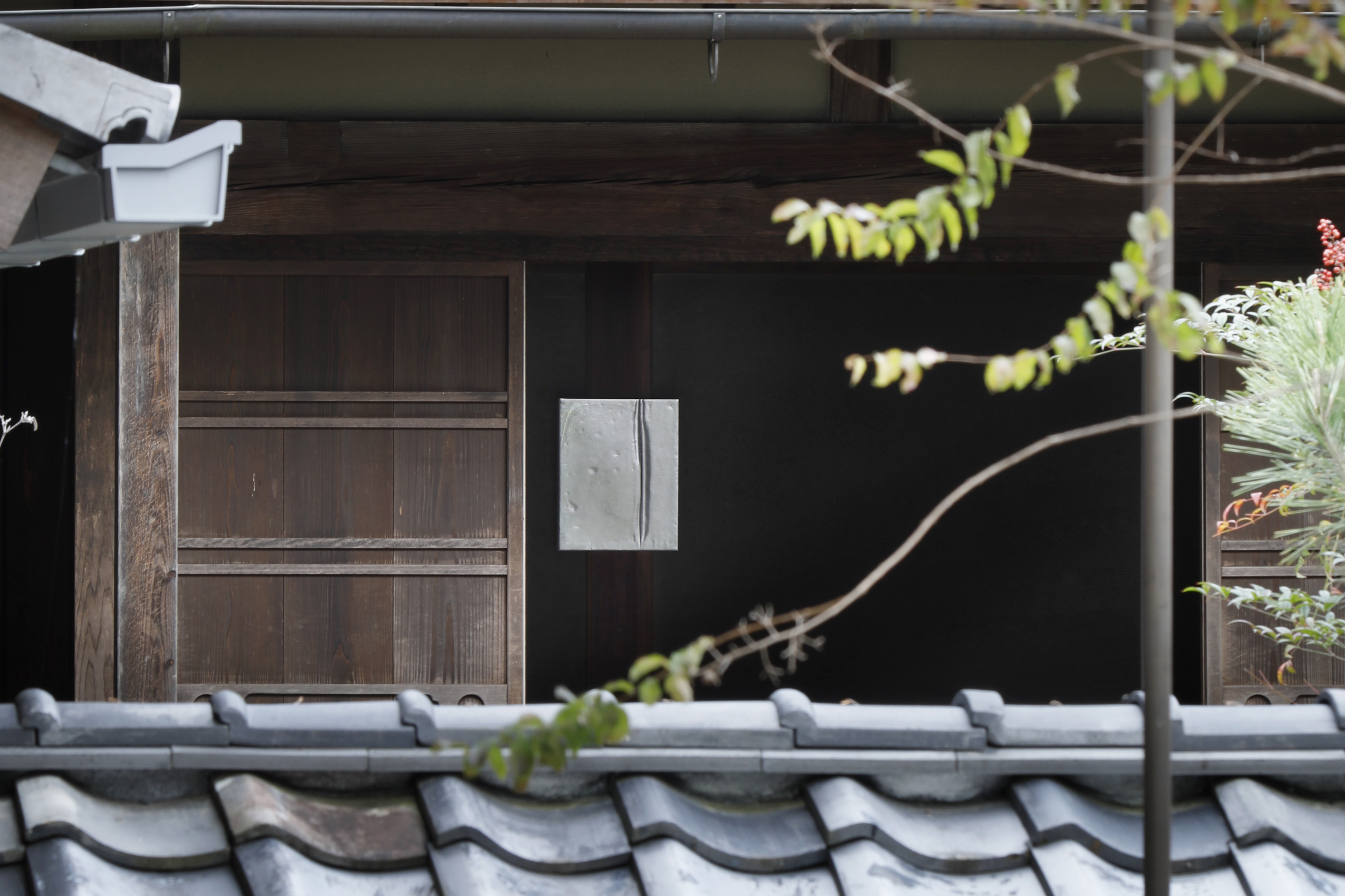
Carrie Yamaoka, 14 by 11 (silver.fold), 2023. Silver vinyl, urethane resin and mixed media on wood panel, 35.6 x 27.9 cm; 14 x 11 in
Installation view of “Inside Out/Outside In”, Manshu-in Temple, Kyoto, Japan. Photo by Takeru Koroda.

Carrie Yamaoka, Cast bag (blue), 2025. Cast urethane resin and mixed media, 82.5 x 20.3 x 5.1 cm; 32 ½ x 8 x 2 in
Installation view of “Inside Out/Outside In”, Manshu-in Temple, Kyoto, Japan. Photo by Takeru Koroda.
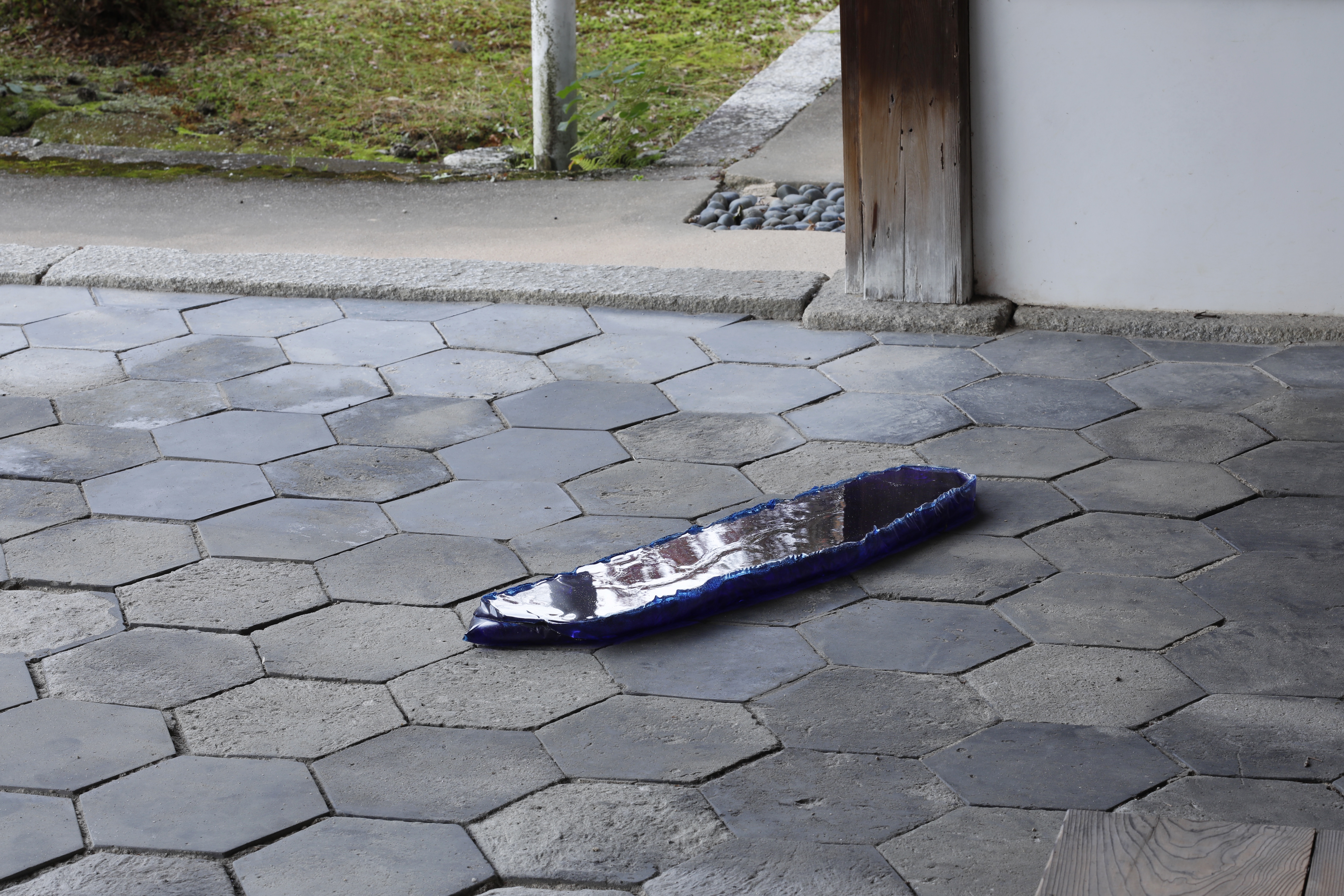
Carrie Yamaoka, Cast bag (blue), 2025. Cast urethane resin and mixed media, 82.5 x 20.3 x 5.1 cm; 32 ½ x 8 x 2 in
Installation view of “Inside Out/Outside In”, Manshu-in Temple, Kyoto, Japan. Photo by Takeru Koroda.

Carrie Yamaoka, Cast bag (blue), 2025. Cast urethane resin and mixed media, 82.5 x 20.3 x 5.1 cm; 32 ½ x 8 x 2 in
Installation view of “Inside Out/Outside In”, Manshu-in Temple, Kyoto, Japan. Photo by Takeru Koroda.
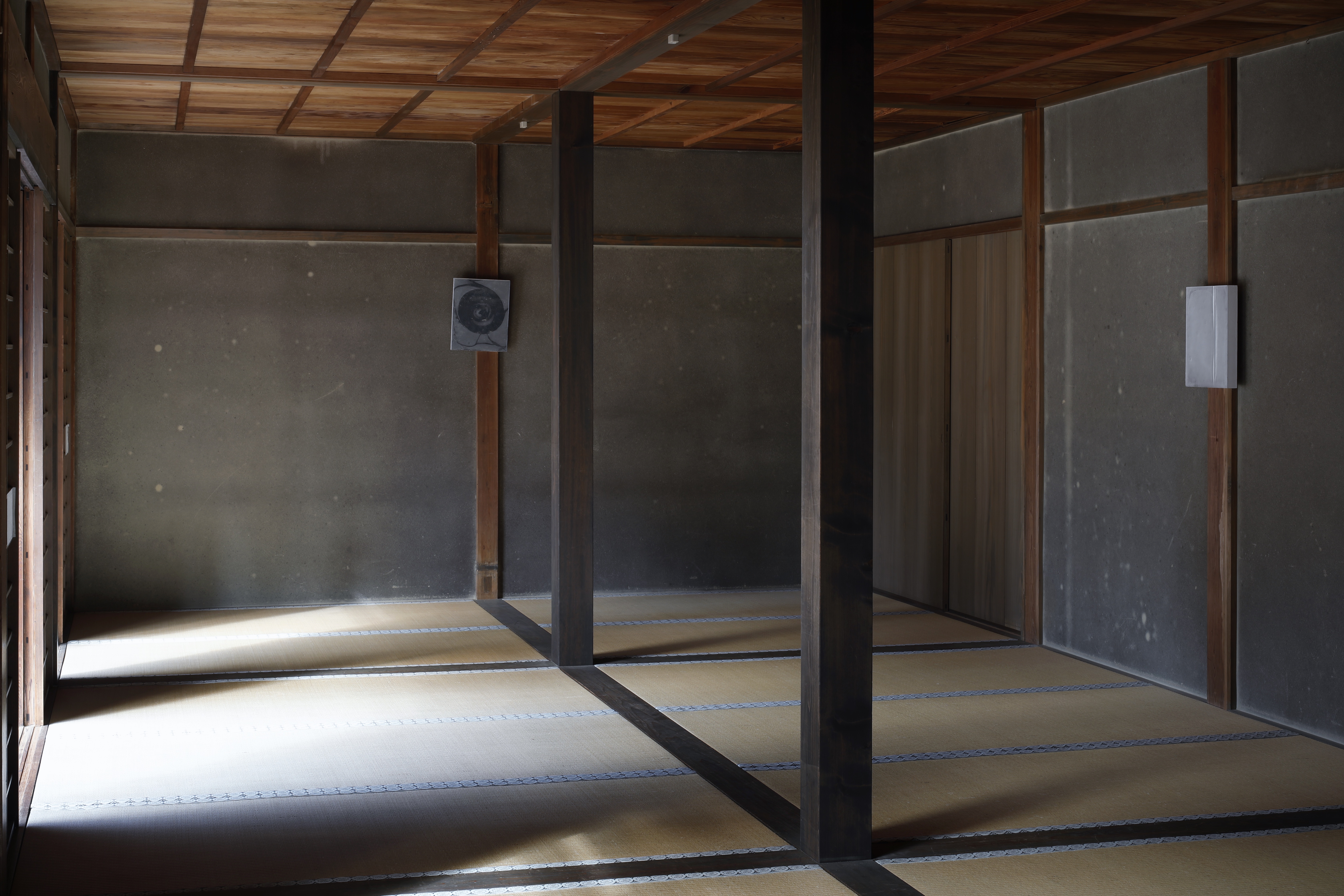
Installation view, Carrie Yamaoka “Inside Out/Outside In”, Manshu-in Temple, Kyoto, 2025.
Image courtesy of the artist and Kiang Malingue. Photo by Takeru Koroda.
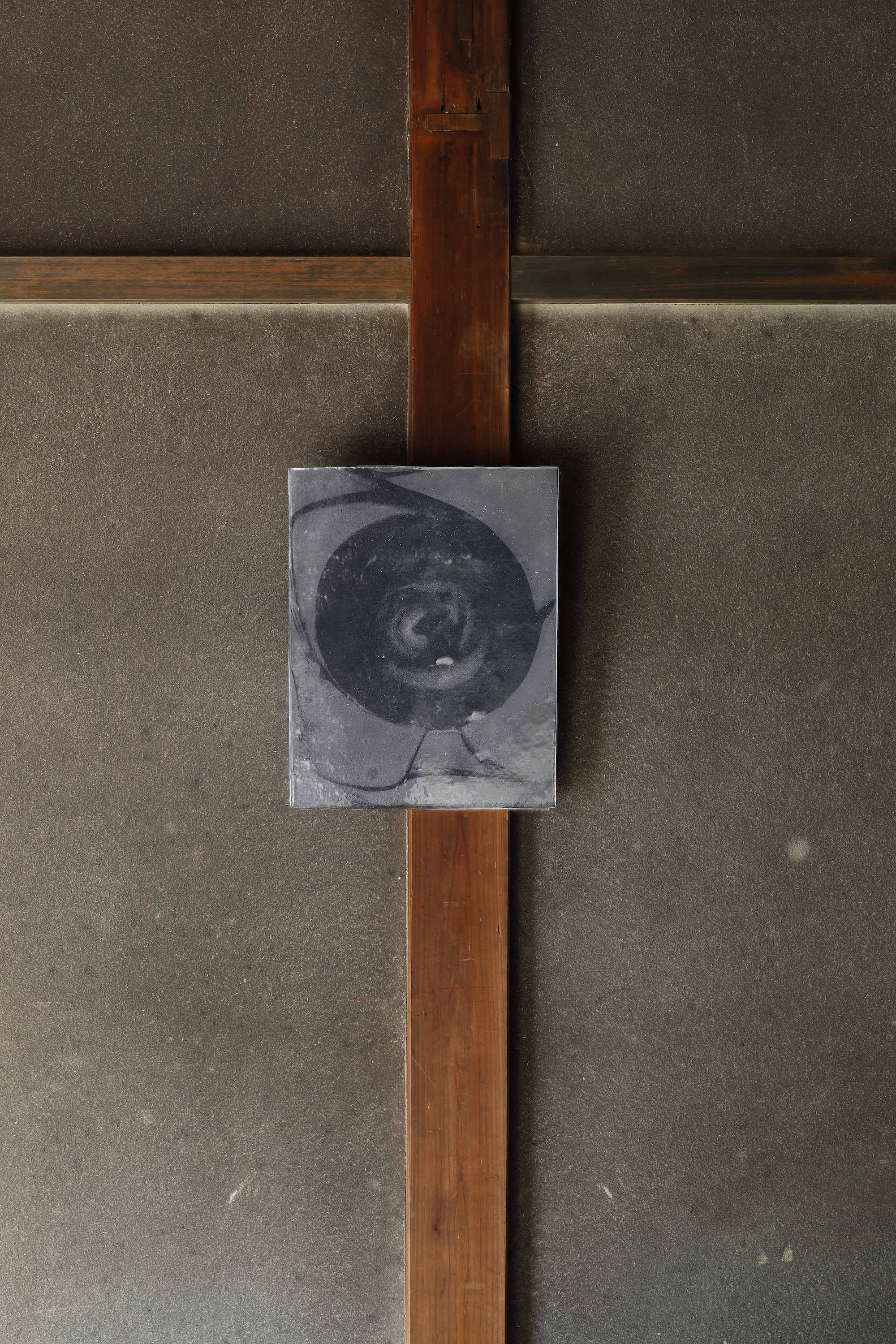
Carrie Yamaoka, 14 by 11 (grey crawl), 2025. Reflective polyester film, urethane resin, flexible urethane resin and mixed media on wood panel, 35.6 x 27.9 cm; 14 x 11 in
Installation view of “Inside Out/Outside In”, Manshu-in Temple, Kyoto, Japan. Photo by Takeru Koroda.
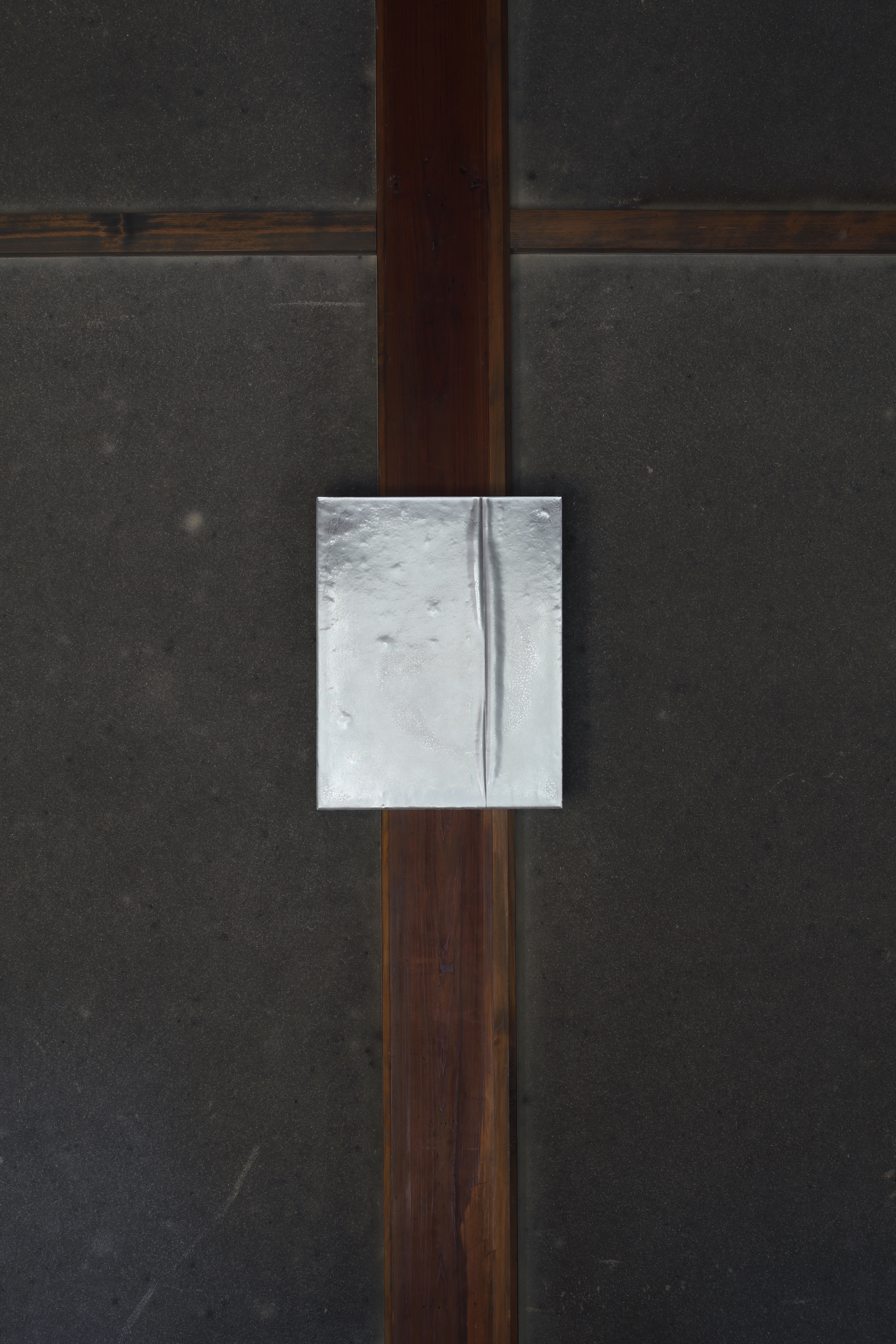
Carrie Yamaoka, 14 by 11 (silver.fold), 2023. Silver vinyl, urethane resin and mixed media on wood panel, 35.6 x 27.9 cm; 14 x 11 in
Installation view of “Inside Out/Outside In”, Manshu-in Temple, Kyoto, Japan. Photo by Takeru Koroda.
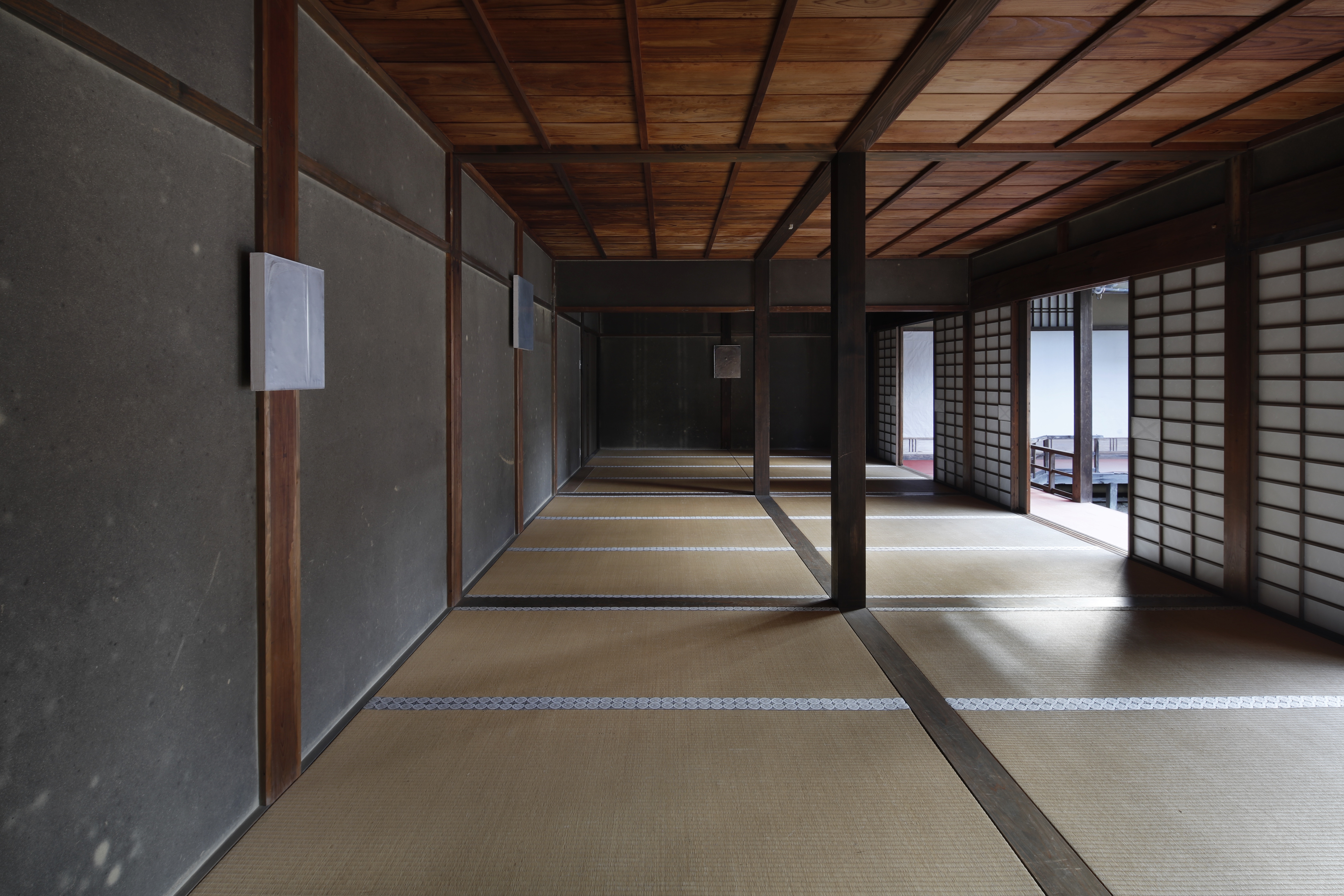
Installation view, Carrie Yamaoka “Inside Out/Outside In”, Manshu-in Temple, Kyoto, 2025.
Image courtesy of the artist and Kiang Malingue. Photo by Takeru Koroda.
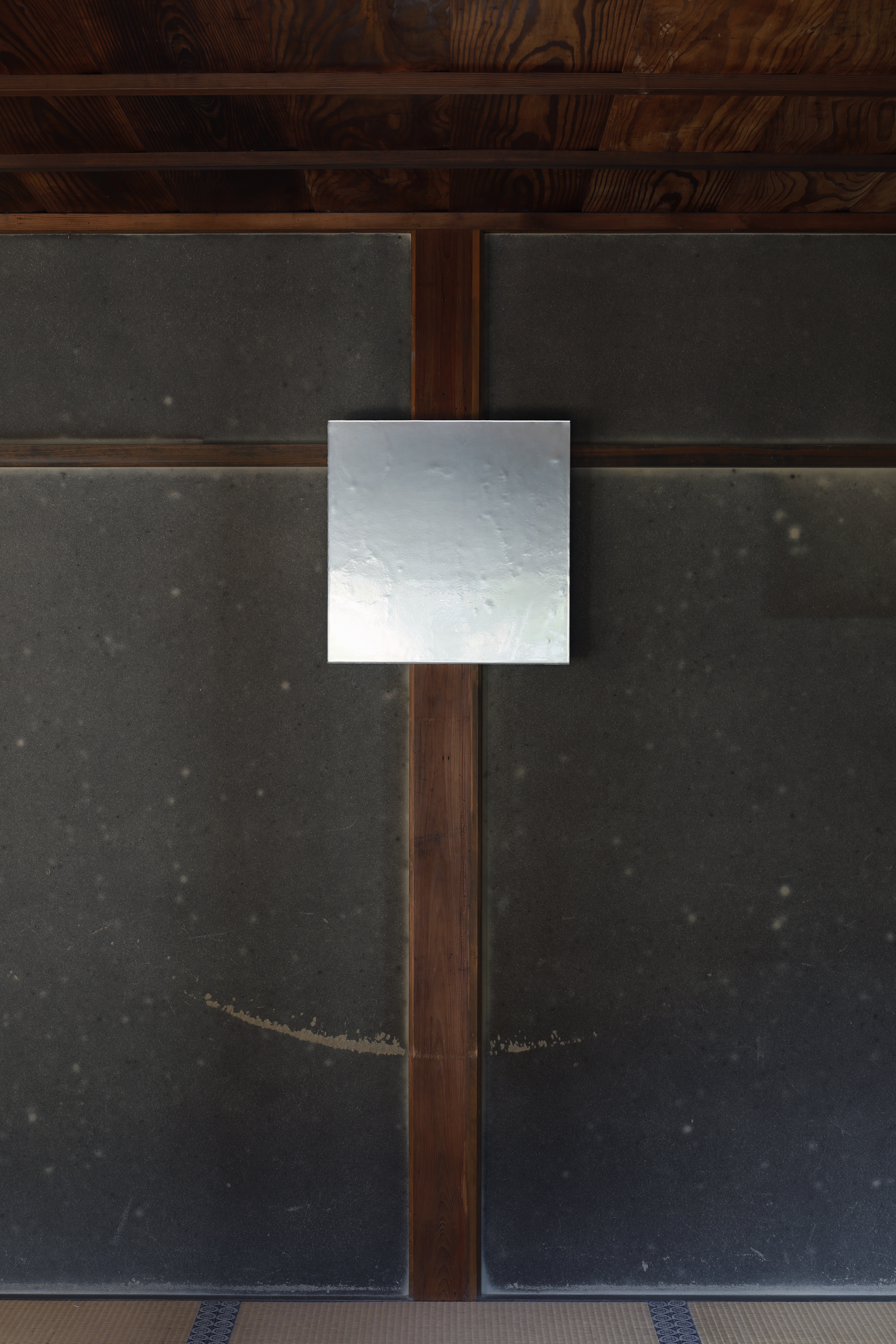
Carrie Yamaoka, 20 by 20 (fogged), 2010. Reflective polyester film, urethane resin and mixed media on wood panel, 50.8 x 50.8 cm; 20 x 20 in
Installatiom view of “Inside Out/Outside In”, Manshu-in Temple, Kyoto, Japan. Photo by Takeru Koroda.
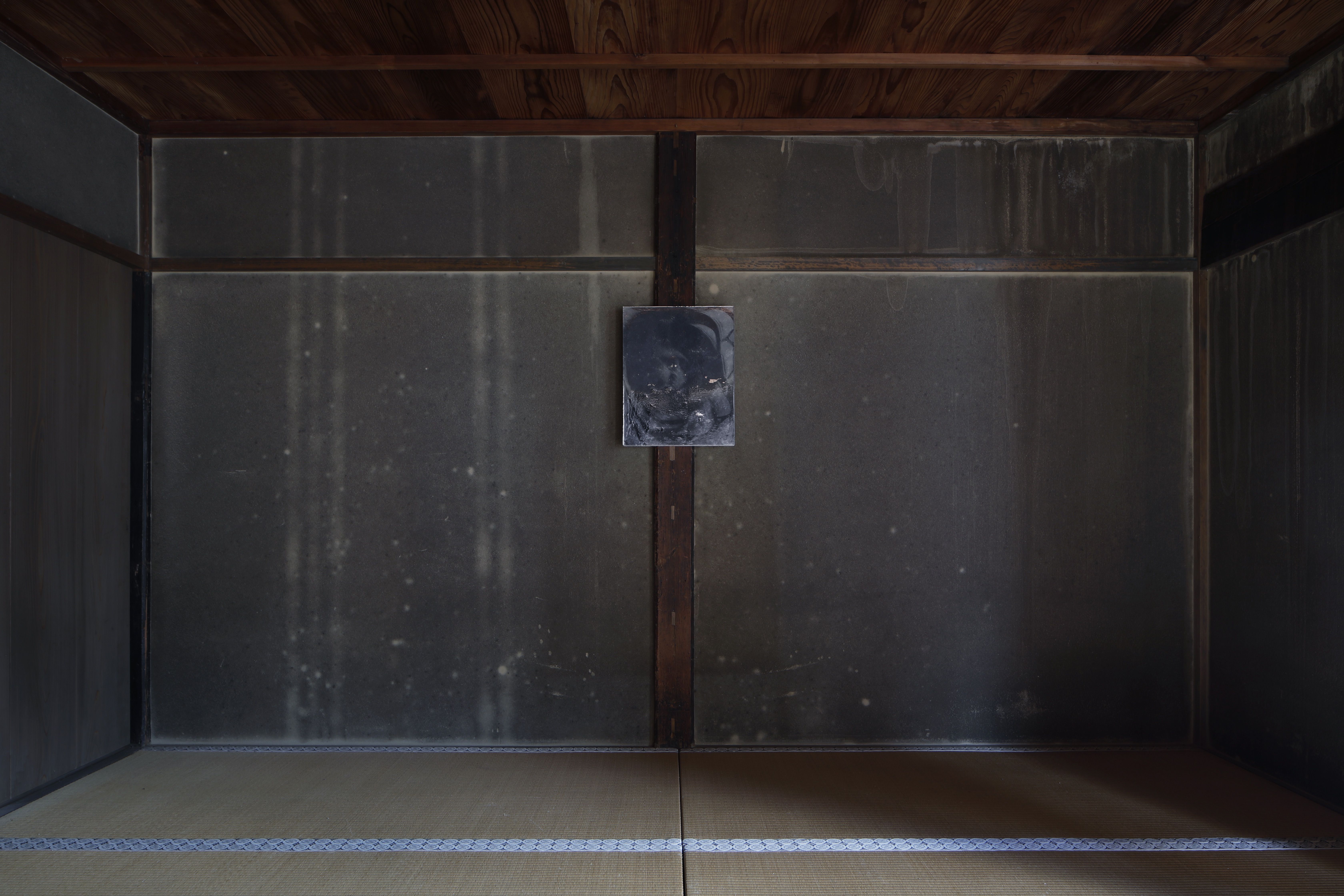
Carrie Yamaoka, 20 by 16 (grey crawl), 2025. Reflective polyester film, urethane resin, flexible urethane resin and mixed media on wood panel, 50.8 x 40.6 cm; 20 x 16 in
Installatiom view of “Inside Out/Outside In”, Manshu-in Temple, Kyoto, Japan. Photo by Takeru Koroda.
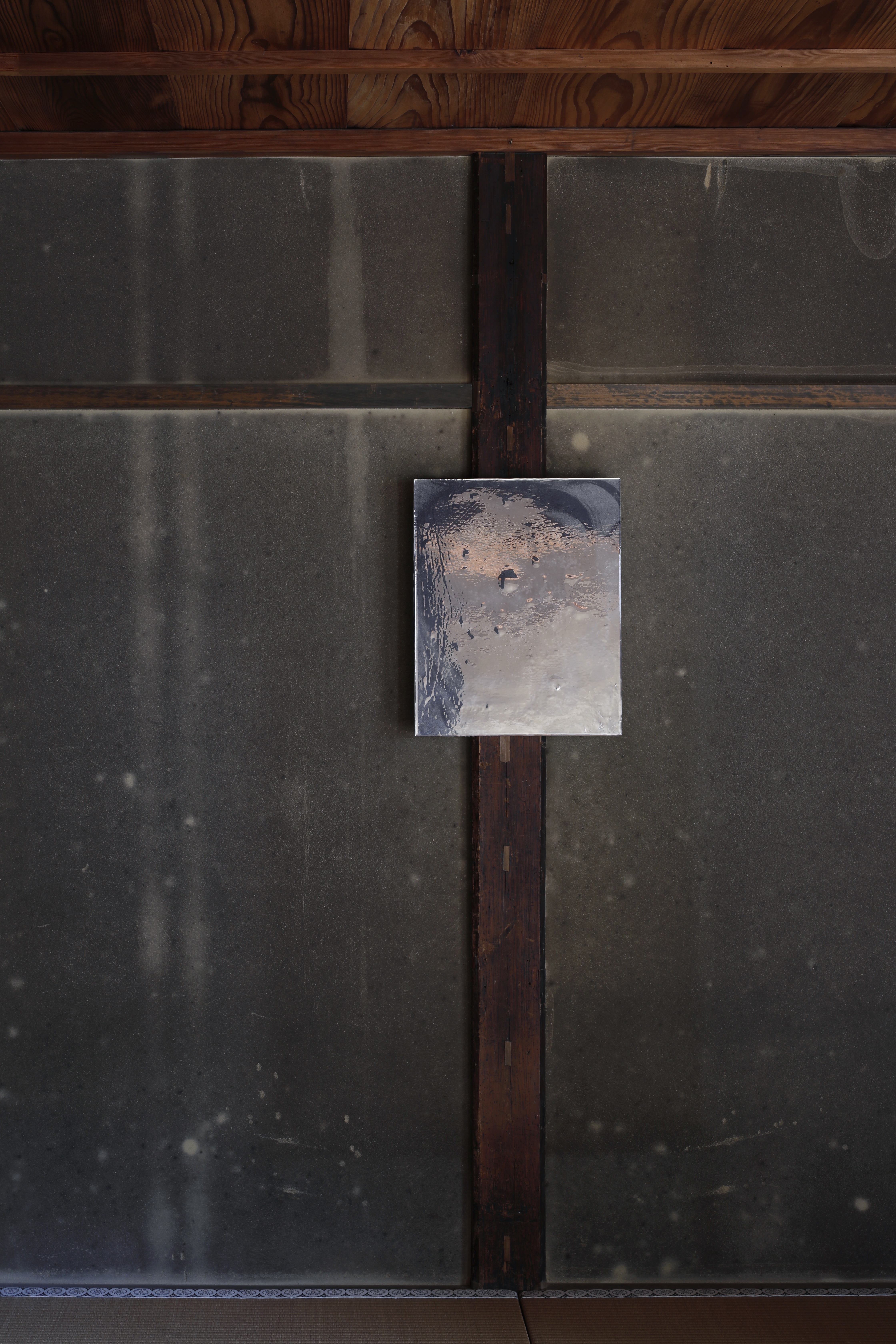
Carrie Yamaoka, 20 by 16 (grey crawl), 2025. Reflective polyester film, urethane resin, flexible urethane resin and mixed media on wood panel, 50.8 x 40.6 cm; 20 x 16 in
Installatiom view of “Inside Out/Outside In”, Manshu-in Temple, Kyoto, Japan. Photo by Takeru Koroda.
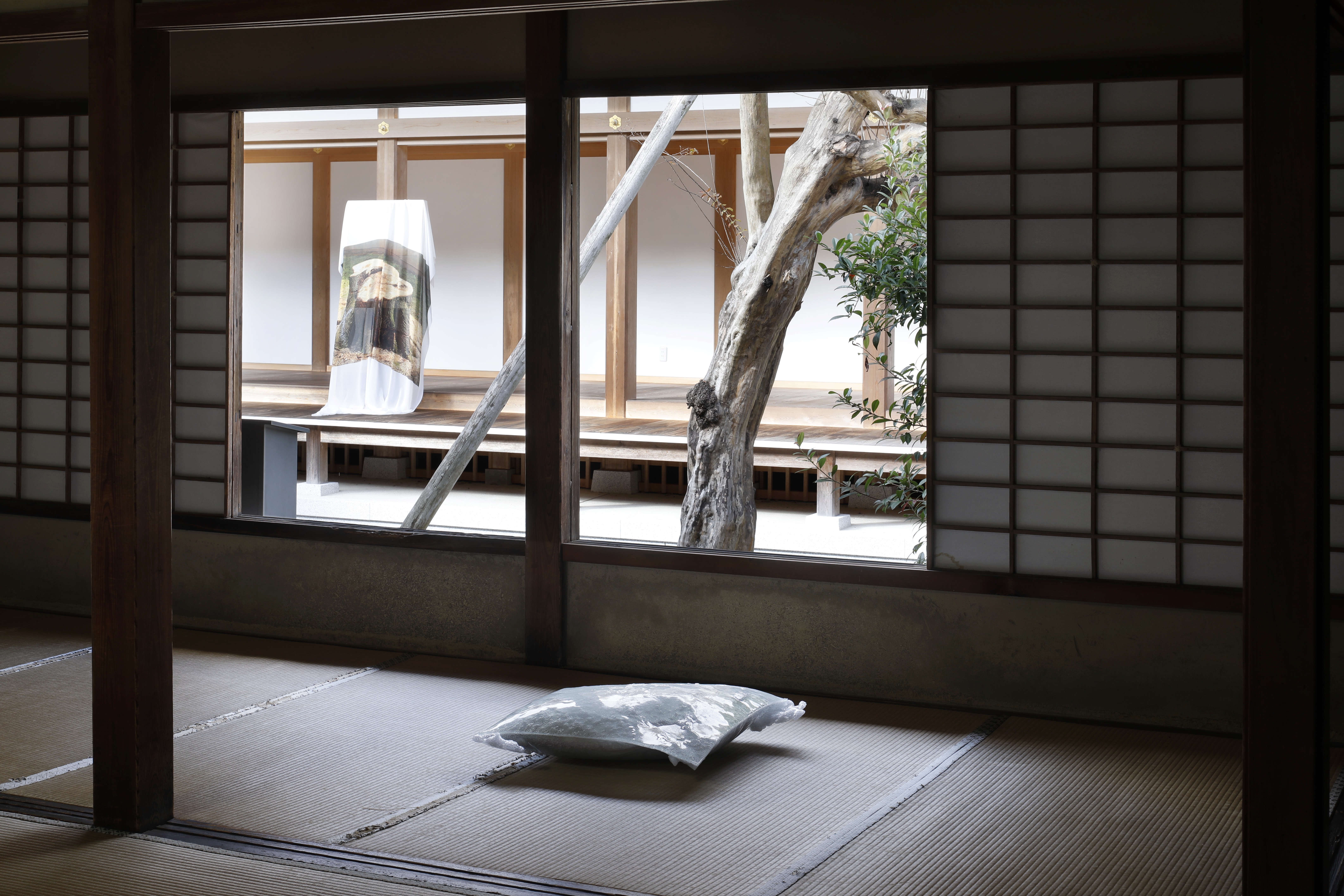
Installation view, Carrie Yamaoka “Inside Out/Outside In”, Manshu-in Temple, Kyoto, 2025.
Image courtesy of the artist and Kiang Malingue. Photo by Takeru Koroda.
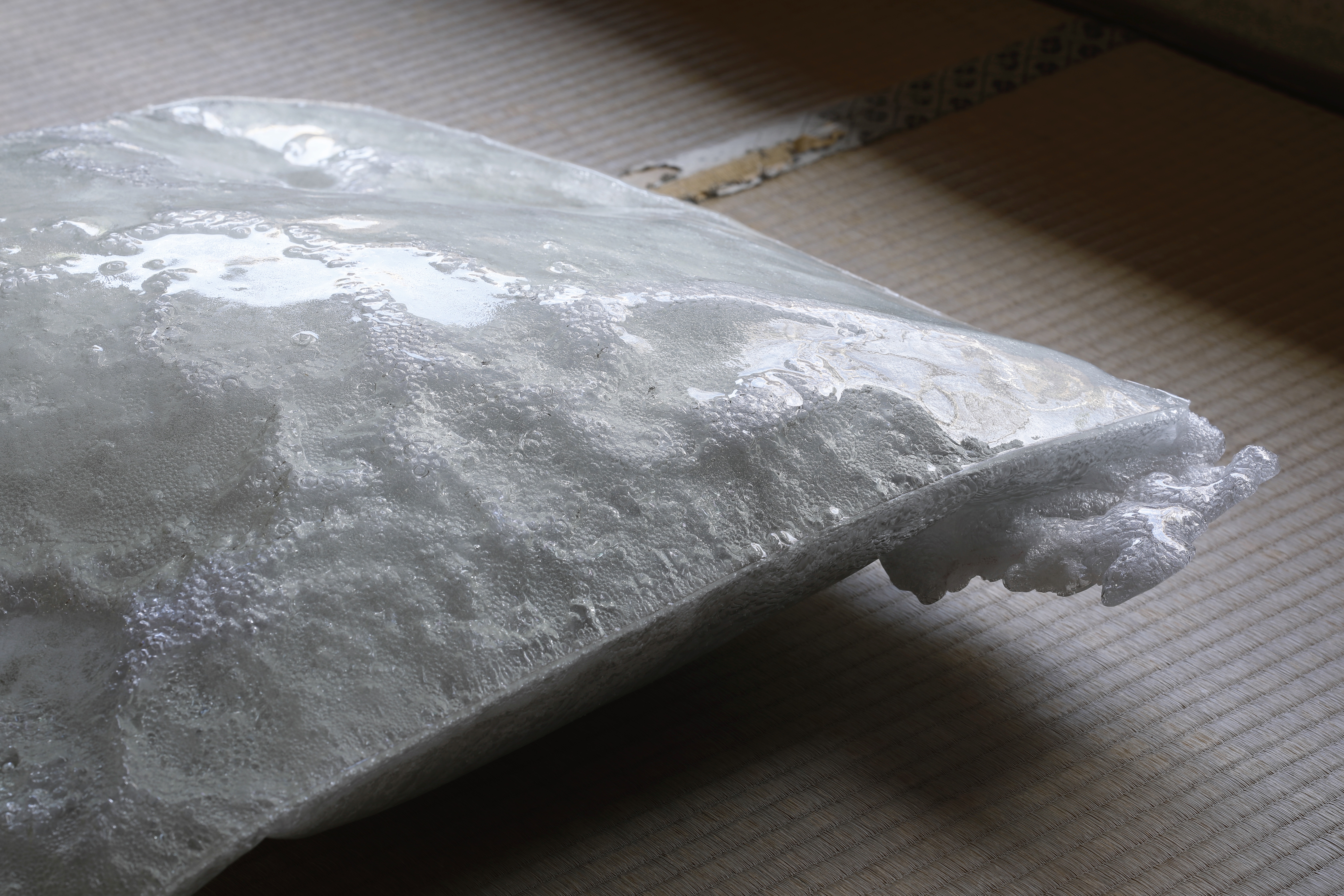
(Detail) Carrie Yamaoka, Approximate Square, 2015. Partially cast reflective polyester film, urethane resin and mixed media, 69.8 x 68.6 x 18.4 cm; 27 ½ x 27 x 7 ¼ in
Installation view of “Inside Out/Outside In”, Manshu-in Temple, Kyoto, Japan. Photo by Takeru Koroda.
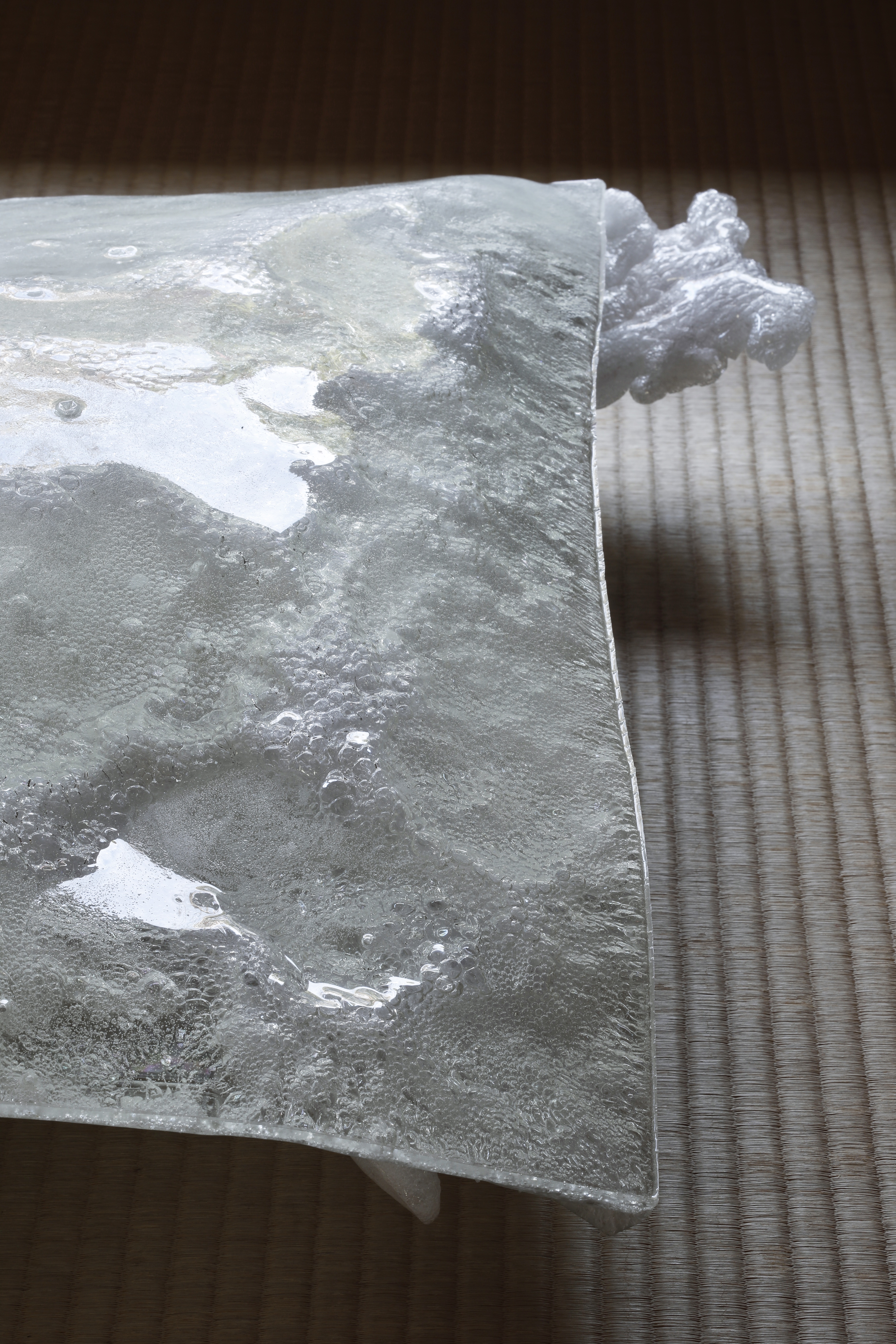
(Detail) Carrie Yamaoka, Approximate Square, 2015. Partially cast reflective polyester film, urethane resin and mixed media, 69.8 x 68.6 x 18.4 cm; 27 ½ x 27 x 7 ¼ in
Installation view of “Inside Out/Outside In”, Manshu-in Temple, Kyoto, Japan. Photo by Takeru Koroda.
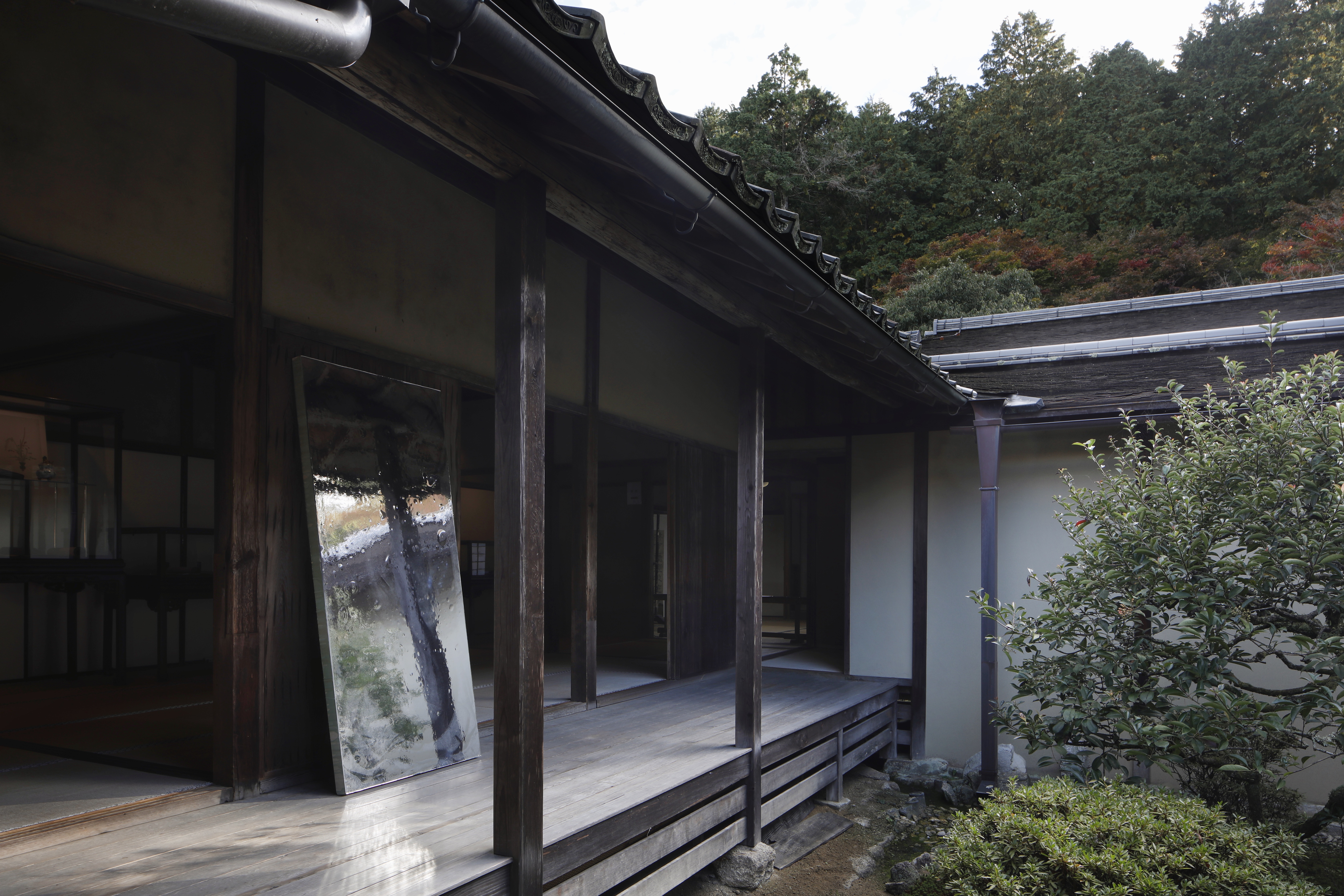
Carrie Yamaoka, 68 by 32 (green) redux, 2001/2025. Reflective polyester film, urethane resin and mixed media on stripped wooden panel, 172.7 x 81.3 cm; 68 x 32 in
Installation view of “Inside Out/Outside In”, Manshu-in Temple, Kyoto, Japan. Photo by Takeru Koroda.
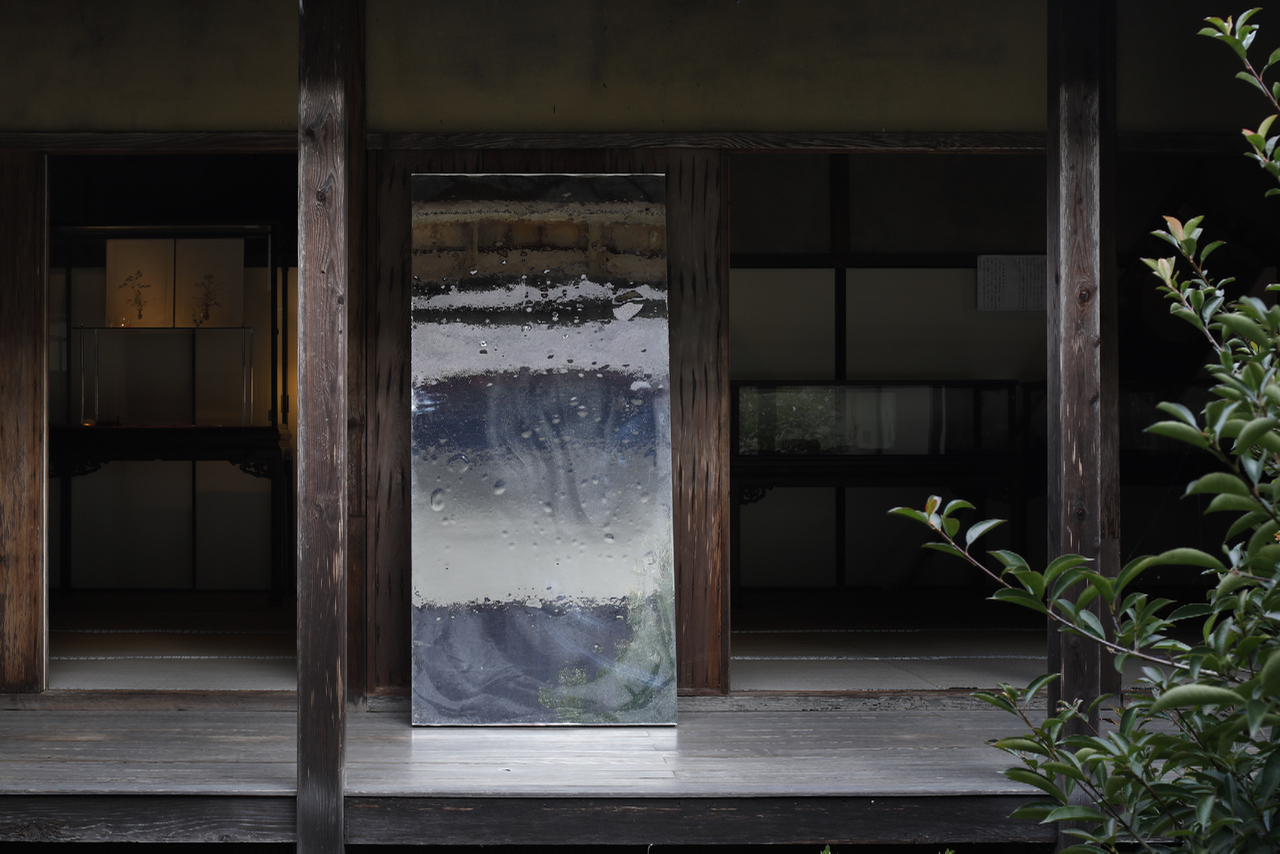
Carrie Yamaoka, 68 by 32 (green) redux, 2001/2025. Reflective polyester film, urethane resin and mixed media on stripped wooden panel, 172.7 x 81.3 cm; 68 x 32 in
Installation view of “Inside Out/Outside In”, Manshu-in Temple, Kyoto, Japan. Photo by Takeru Koroda.
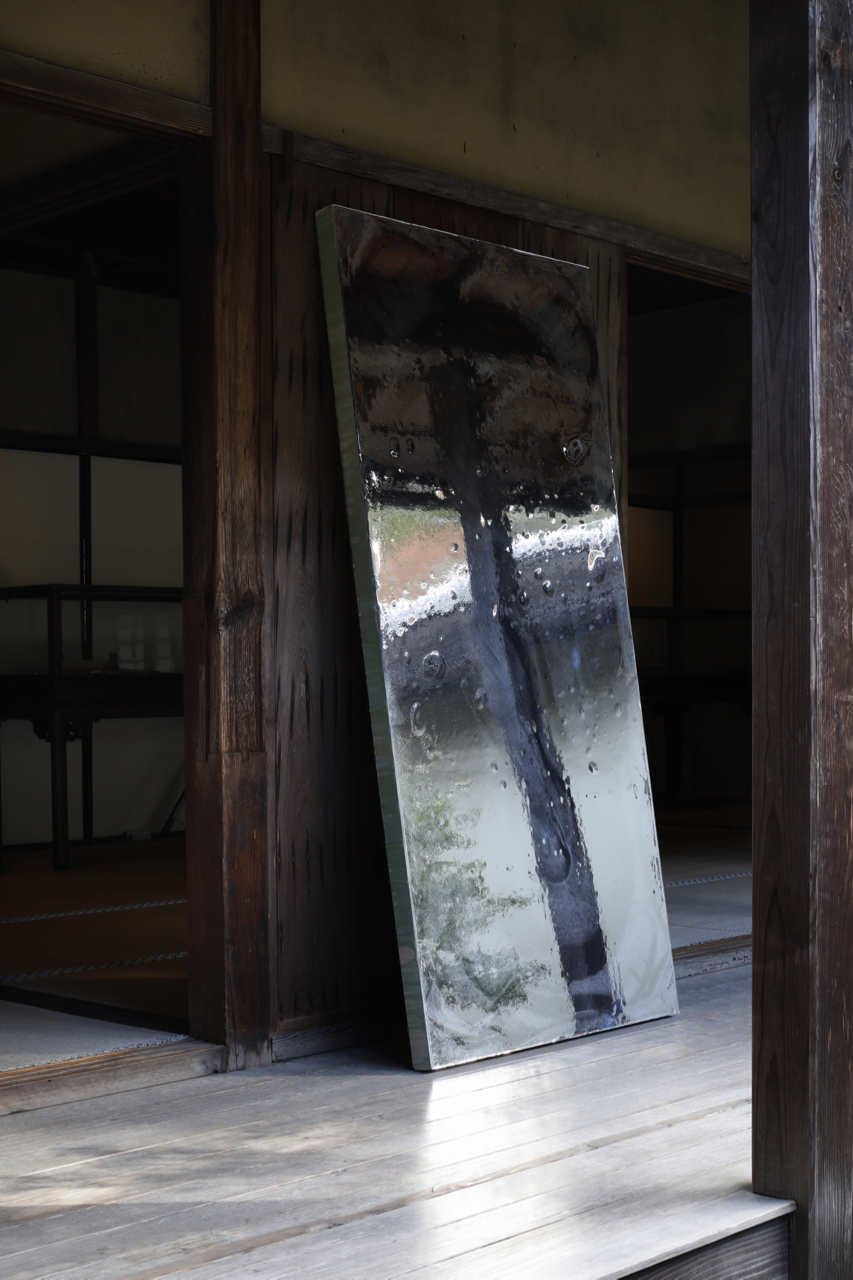
Carrie Yamaoka, 68 by 32 (green) redux, 2001/2025. Reflective polyester film, urethane resin and mixed media on stripped wooden panel, 172.7 x 81.3 cm; 68 x 32 in
Installation view of “Inside Out/Outside In”, Manshu-in Temple, Kyoto, Japan. Photo by Takeru Koroda.
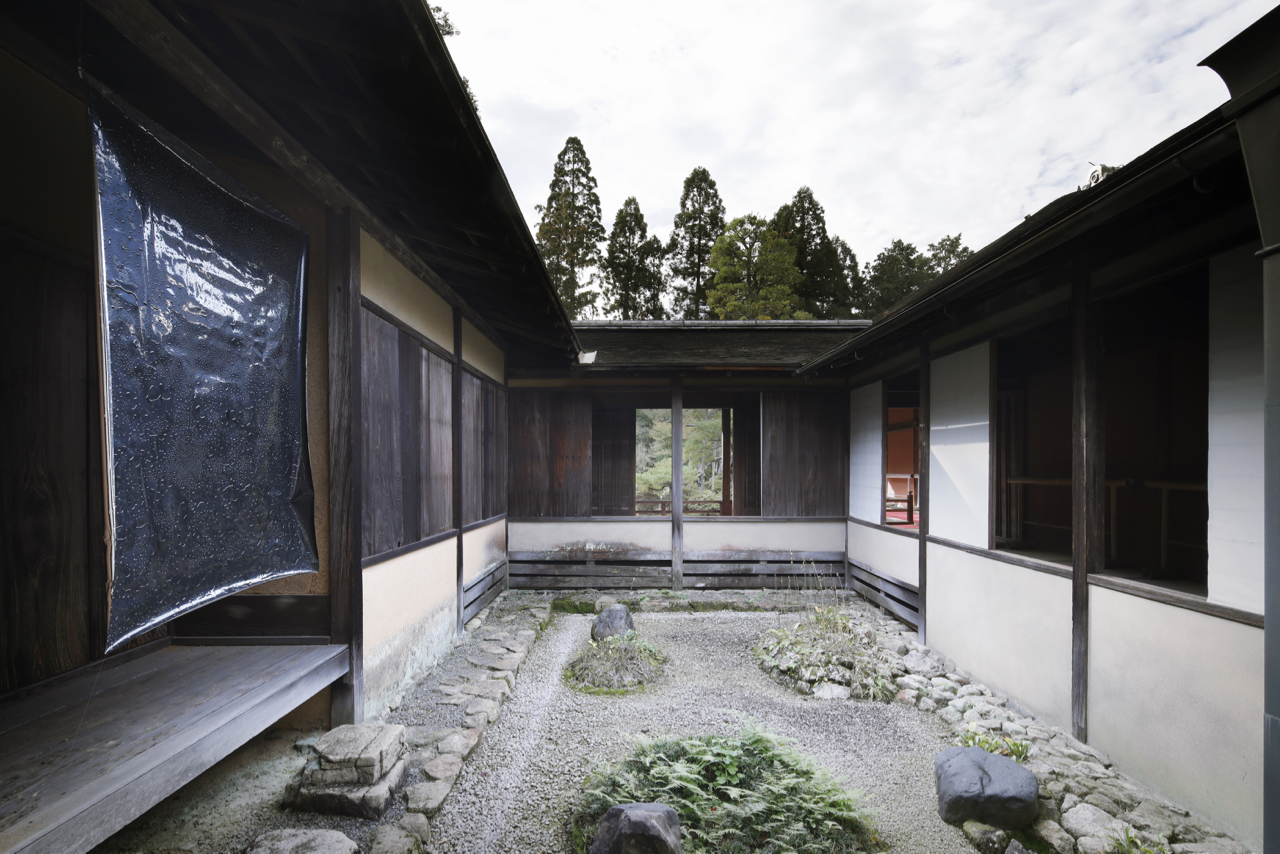
Carrie Yamaoka, Black crawl, 2025. Flexible urethane resin on black vinyl, 172.7 x 121.9 x 10.2 cm; 68 x 48 x 4 in
Installation view of “Inside Out/Outside In”, Manshu-in Temple, Kyoto, Japan. Photo by Takeru Koroda.
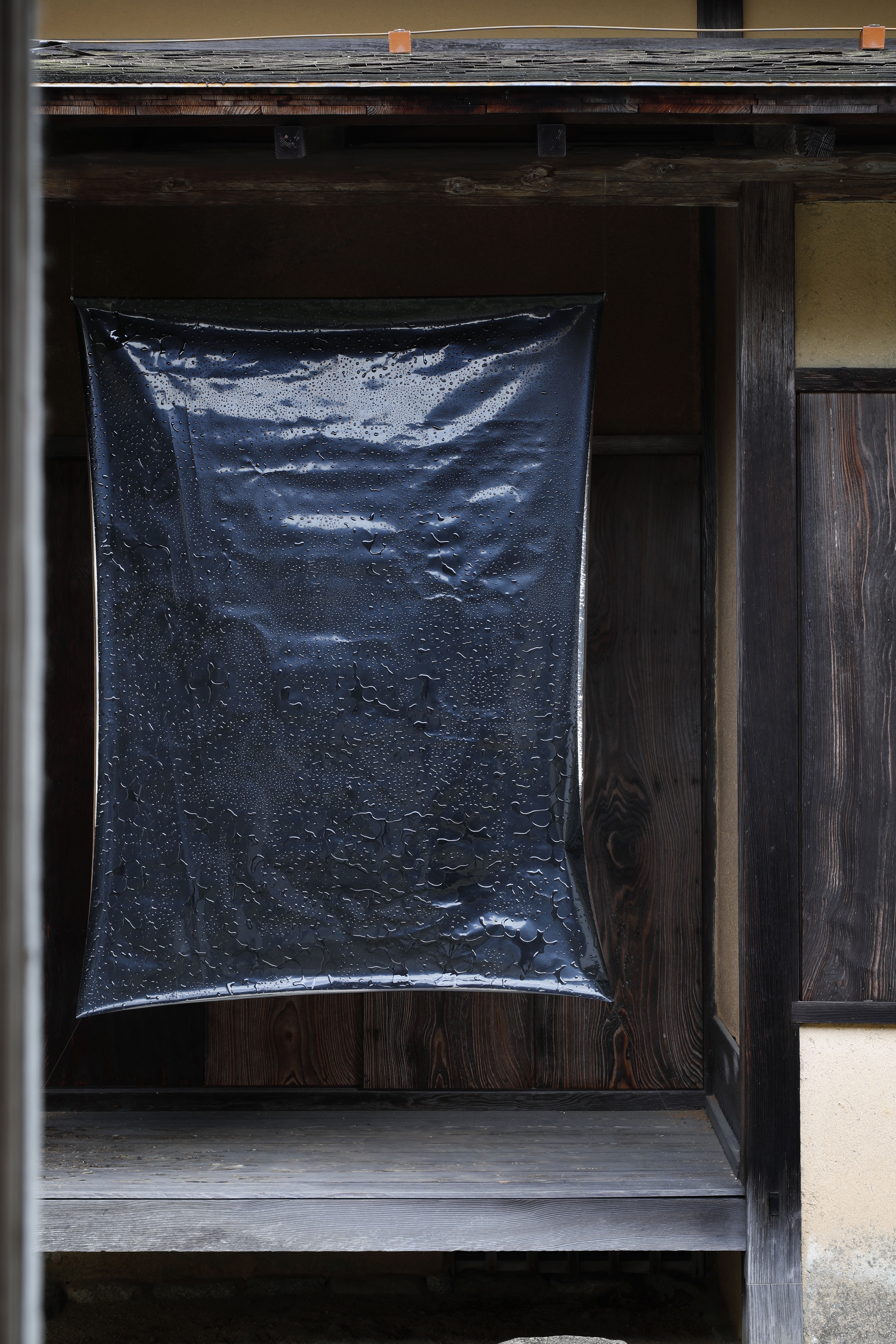
Carrie Yamaoka, Black crawl, 2025. Flexible urethane resin on black vinyl, 172.7 x 121.9 x 10.2 cm; 68 x 48 x 4 in
Installation view of “Inside Out/Outside In”, Manshu-in Temple, Kyoto, Japan. Photo by Takeru Koroda.
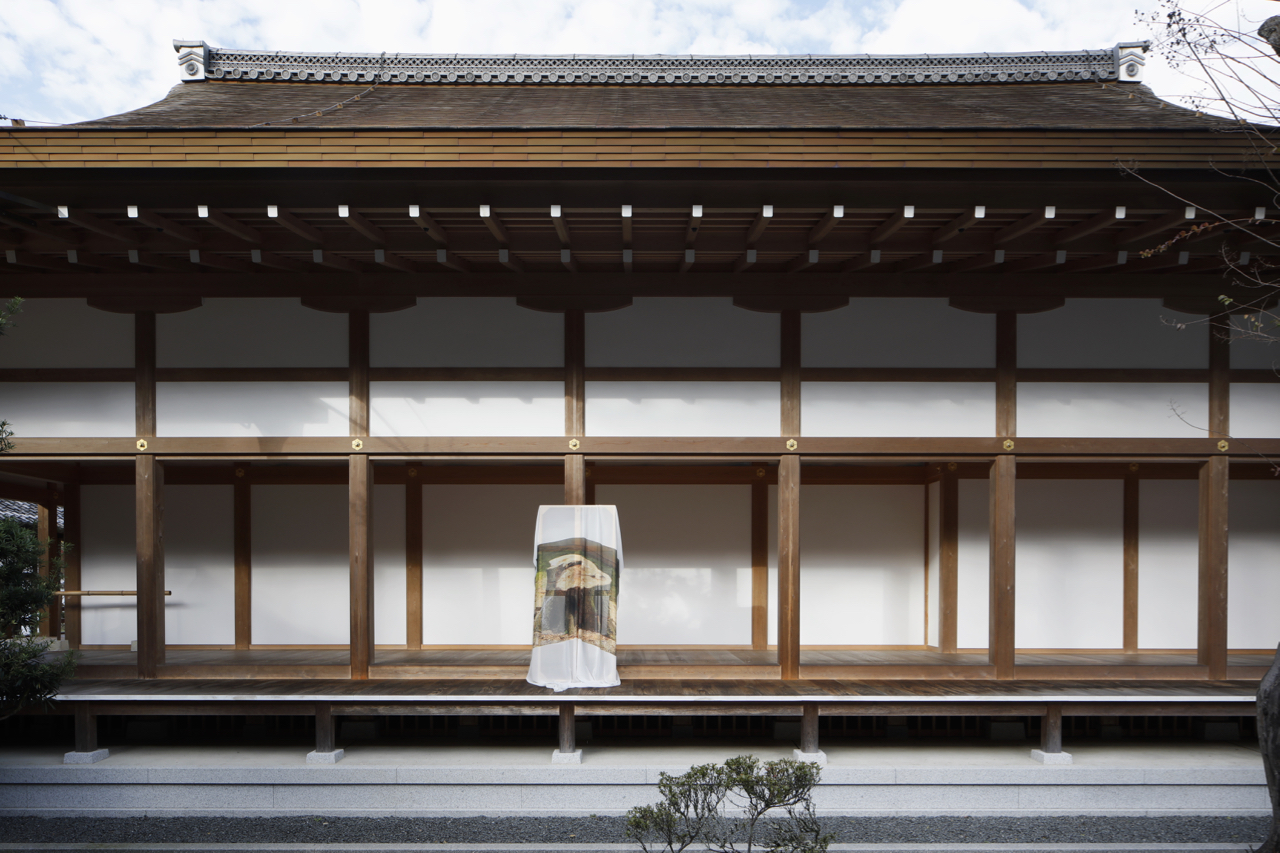
Carrie Yamaoka, Stump 4, 2025. Digital inkjet on synthetic chiffon and wooden stretcher frame, 160 x 91.4 x 45.7 cm; 63 x 36 x 18 in
Installation view of “Inside Out/Outside In”, Manshu-in Temple, Kyoto, Japan. Photo by Takeru Koroda.
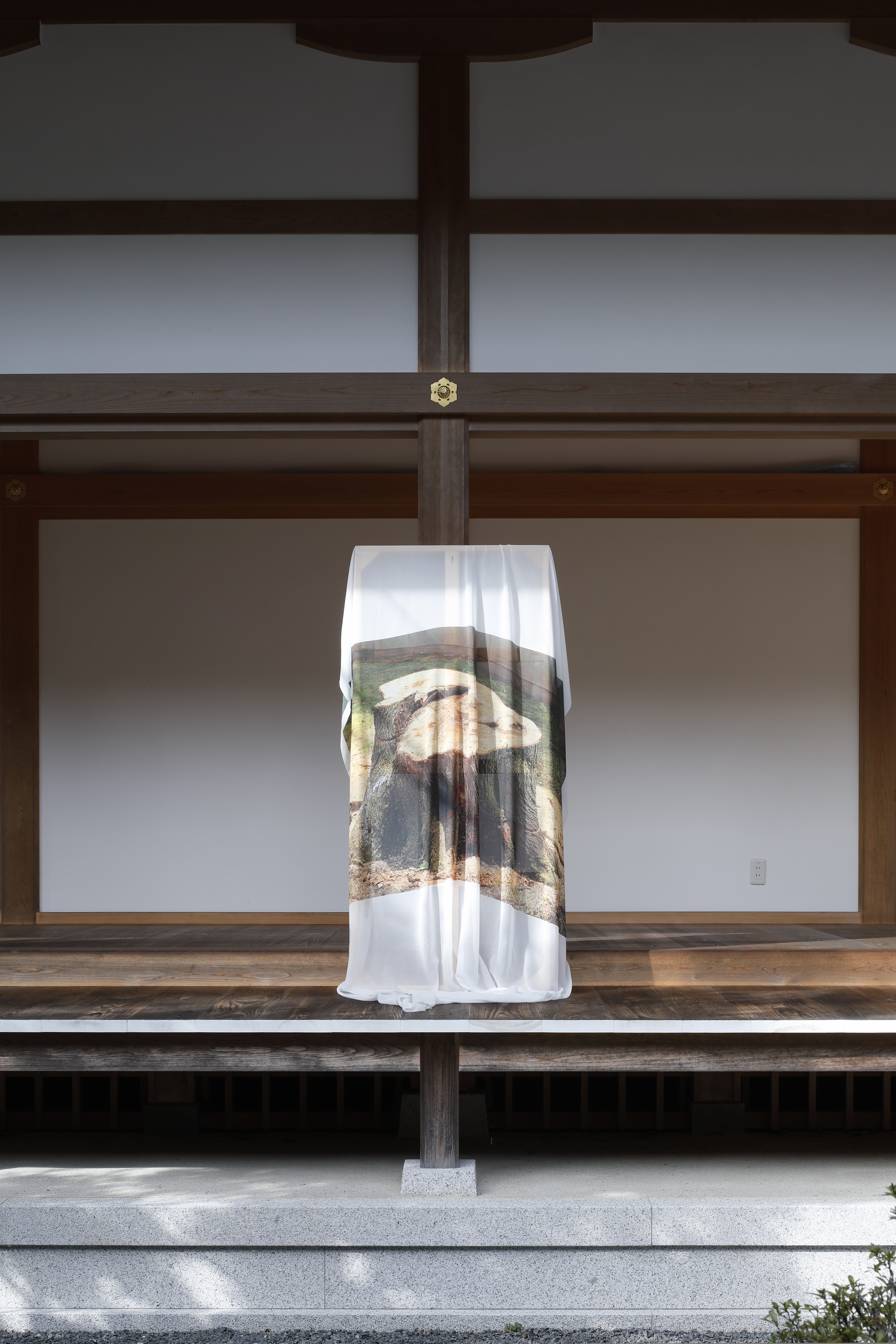
Carrie Yamaoka, Stump 4, 2025. Digital inkjet on synthetic chiffon and wooden stretcher frame, 160 x 91.4 x 45.7 cm; 63 x 36 x 18 in
Installation view of “Inside Out/Outside In”, Manshu-in Temple, Kyoto, Japan. Photo by Takeru Koroda.

Carrie Yamaoka, 24 by 24 (cast:green), 2025. Cast flexible urethane resin and powdered pigment, 61 x 61 cm; 24 x 24 in
Installation view of “Inside Out/Outside In”, Manshu-in Temple, Kyoto, Japan. Photo by Takeru Koroda.
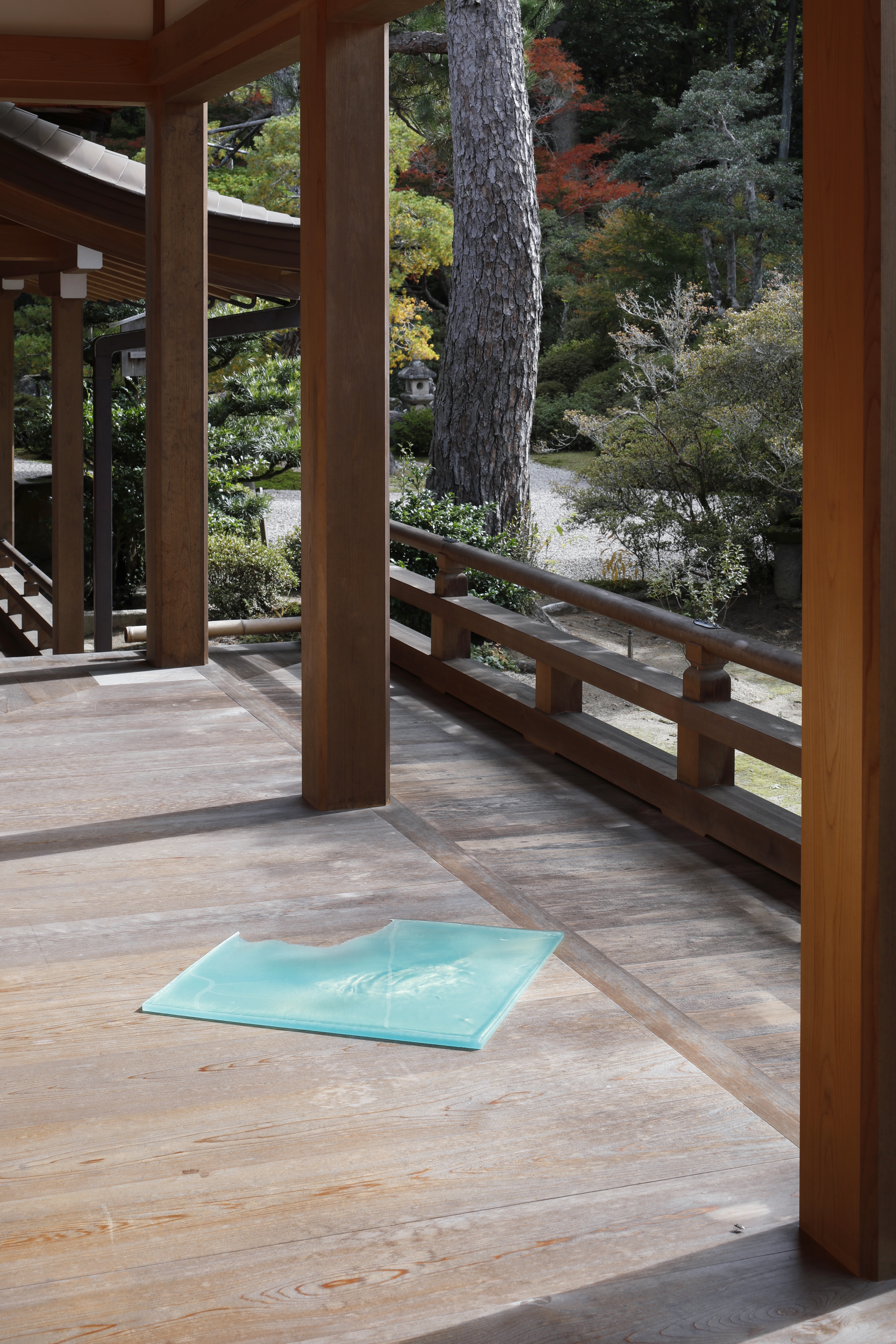
Carrie Yamaoka, 24 by 24 (cast:green), 2025. Cast flexible urethane resin and powdered pigment, 61 x 61 cm; 24 x 24 in
Installation view of “Inside Out/Outside In”, Manshu-in Temple, Kyoto, Japan. Photo by Takeru Koroda.

Carrie Yamaoka, 24 by 24 (cast:green), 2025. Cast flexible urethane resin and powdered pigment, 61 x 61 cm; 24 x 24 in
Installation view of “Inside Out/Outside In”, Manshu-in Temple, Kyoto, Japan. Photo by Takeru Koroda.
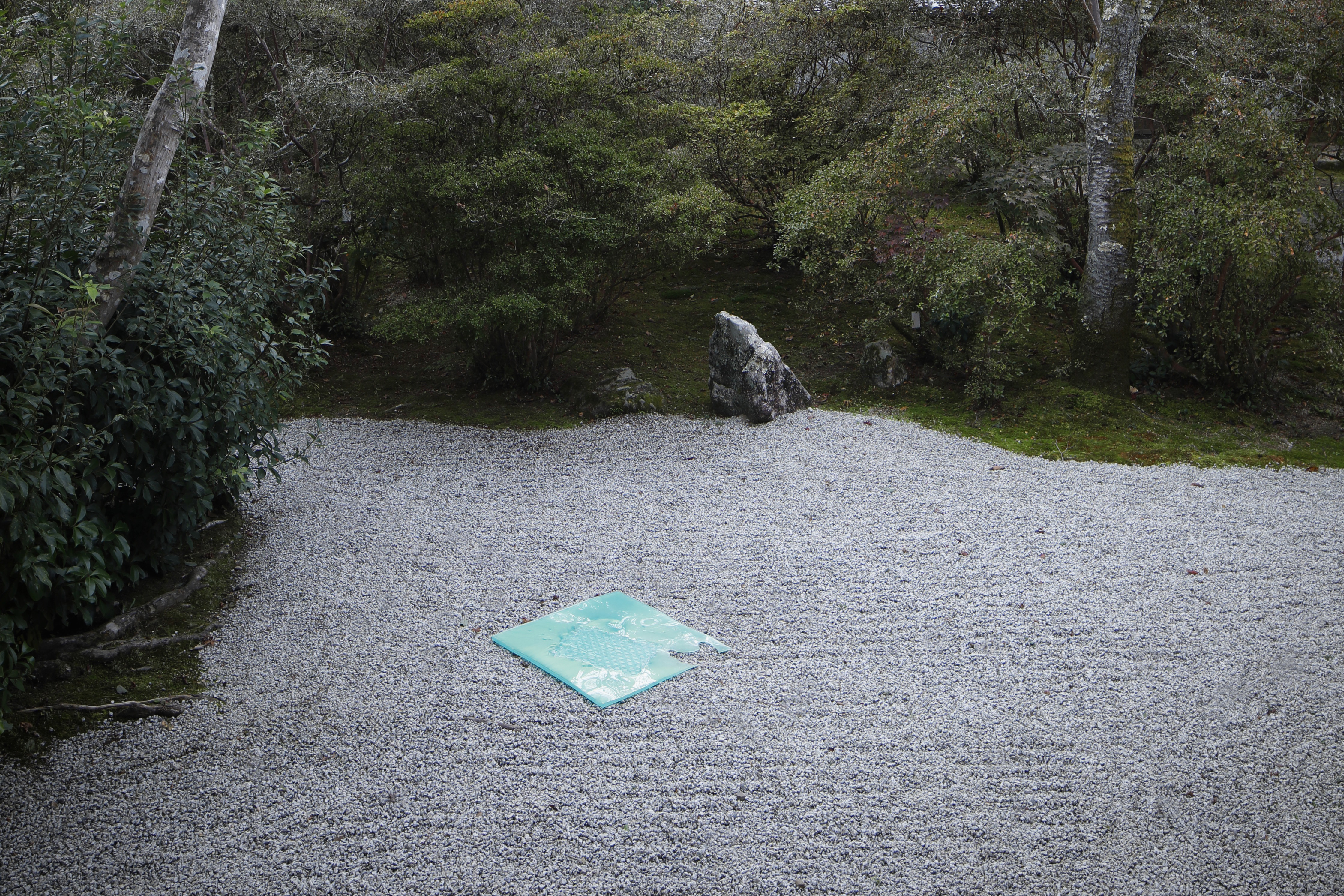
Carrie Yamaoka, 24 by 24 (cast bubble) #6, 2025. Cast flexible urethane resin and powdered pigment, 61 x 61 cm; 24 x 24 in
Installation view of “Inside Out/Outside In”, Manshu-in Temple, Kyoto, Japan. Photo by Takeru Koroda.

Carrie Yamaoka, 24 by 24 (cast bubble) #6, 2025. Cast flexible urethane resin and powdered pigment, 61 x 61 cm; 24 x 24 in
Installation view of “Inside Out/Outside In”, Manshu-in Temple, Kyoto, Japan. Photo by Takeru Koroda.
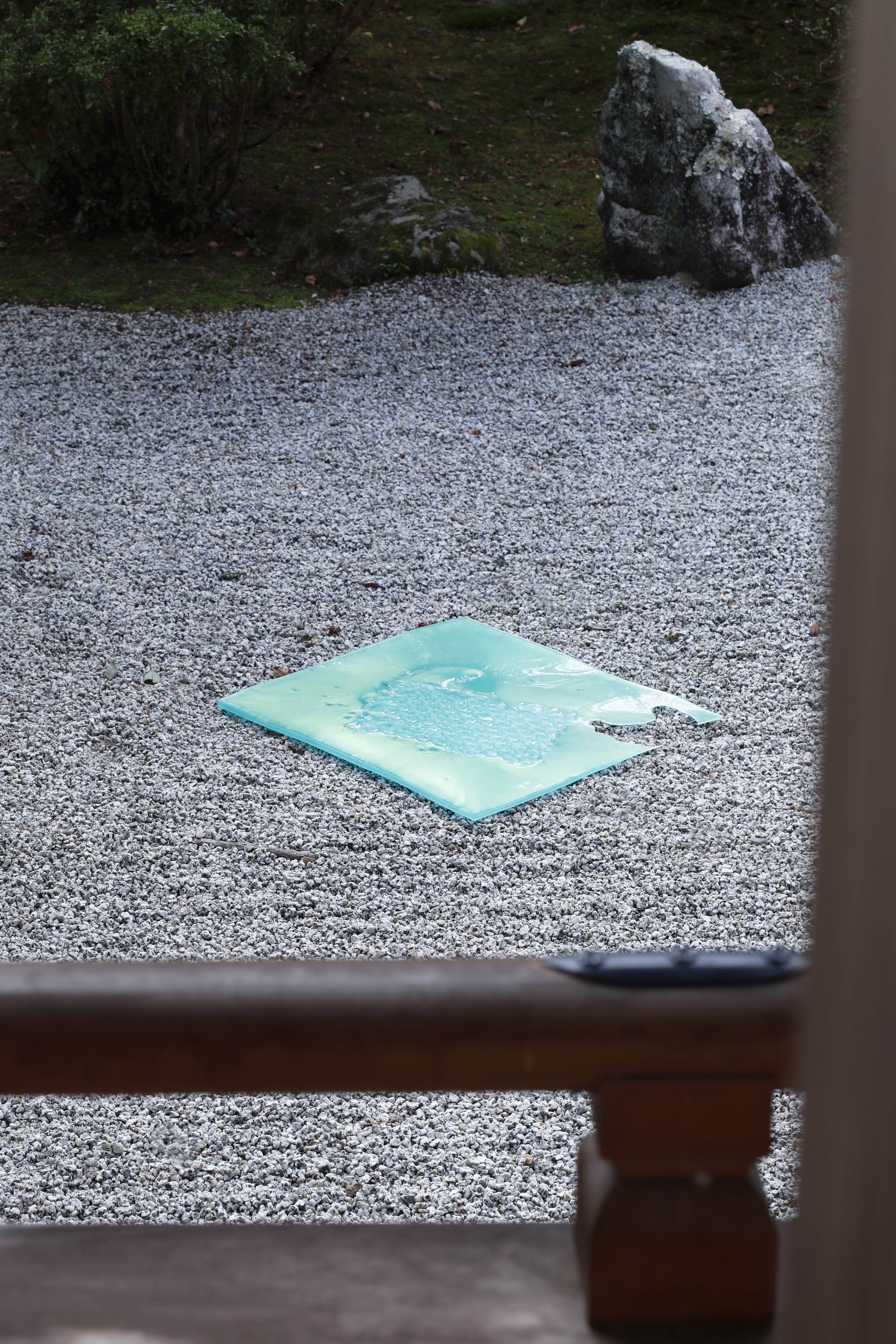
Carrie Yamaoka, 24 by 24 (cast bubble) #6, 2025. Cast flexible urethane resin and powdered pigment, 61 x 61 cm; 24 x 24 in
Installation view of “Inside Out/Outside In”, Manshu-in Temple, Kyoto, Japan. Photo by Takeru Koroda.

Carrie Yamaoka, Koolpop no.9 (ongoing), 2001/2025. Epoxy resin and mixed media on reflective polyester film, 132.7 x 75.6 cm; 52 ¼ x 29 ¾ in
Installation view of “Inside Out/Outside In”, Manshu-in Temple, Kyoto, Japan. Photo by Takeru Koroda.
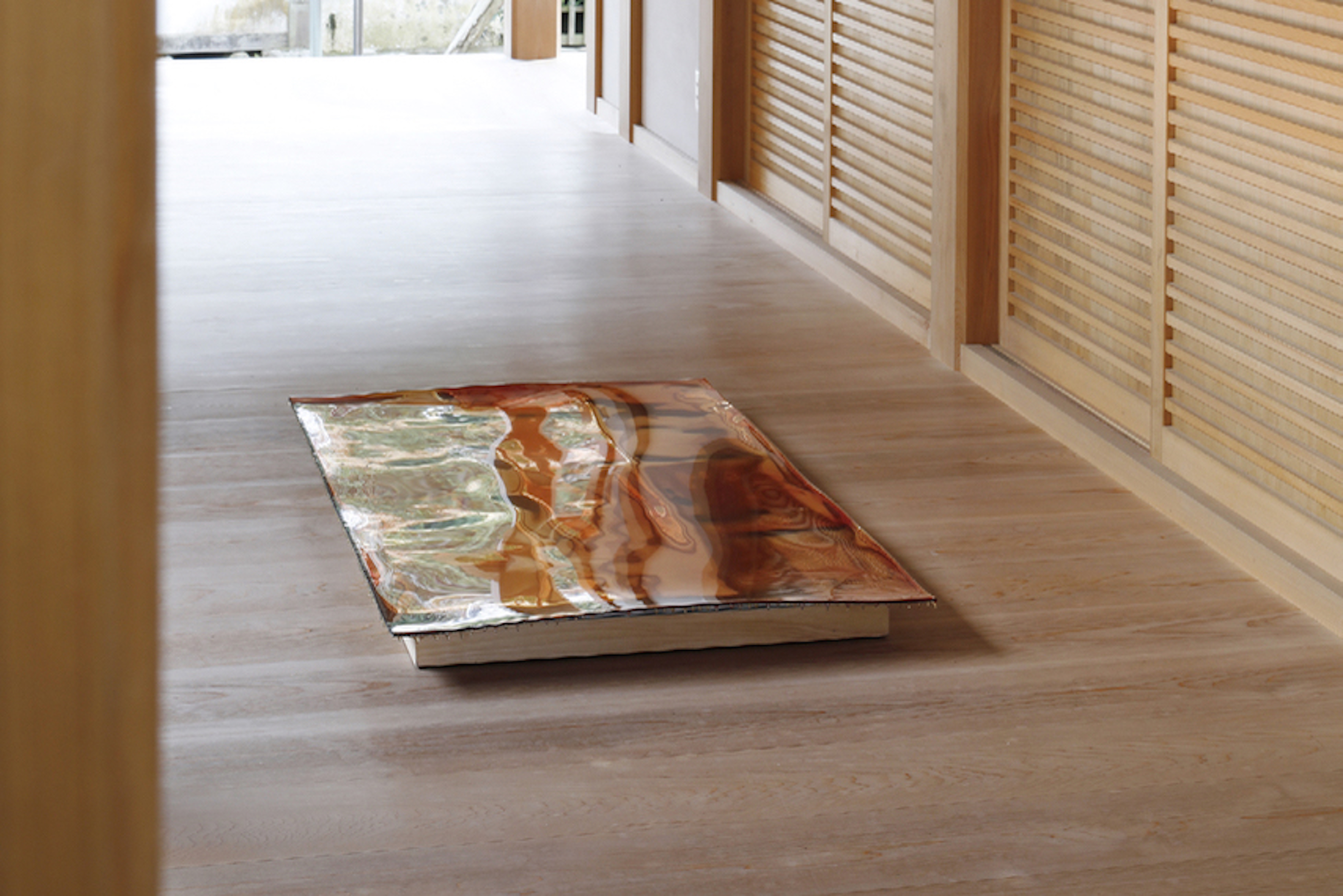
Carrie Yamaoka, Koolpop no.9 (ongoing), 2001/2025. Epoxy resin and mixed media on reflective polyester film, 132.7 x 75.6 cm; 52 ¼ x 29 ¾ in
Installation view of “Inside Out/Outside In”, Manshu-in Temple, Kyoto, Japan. Photo by Takeru Koroda.
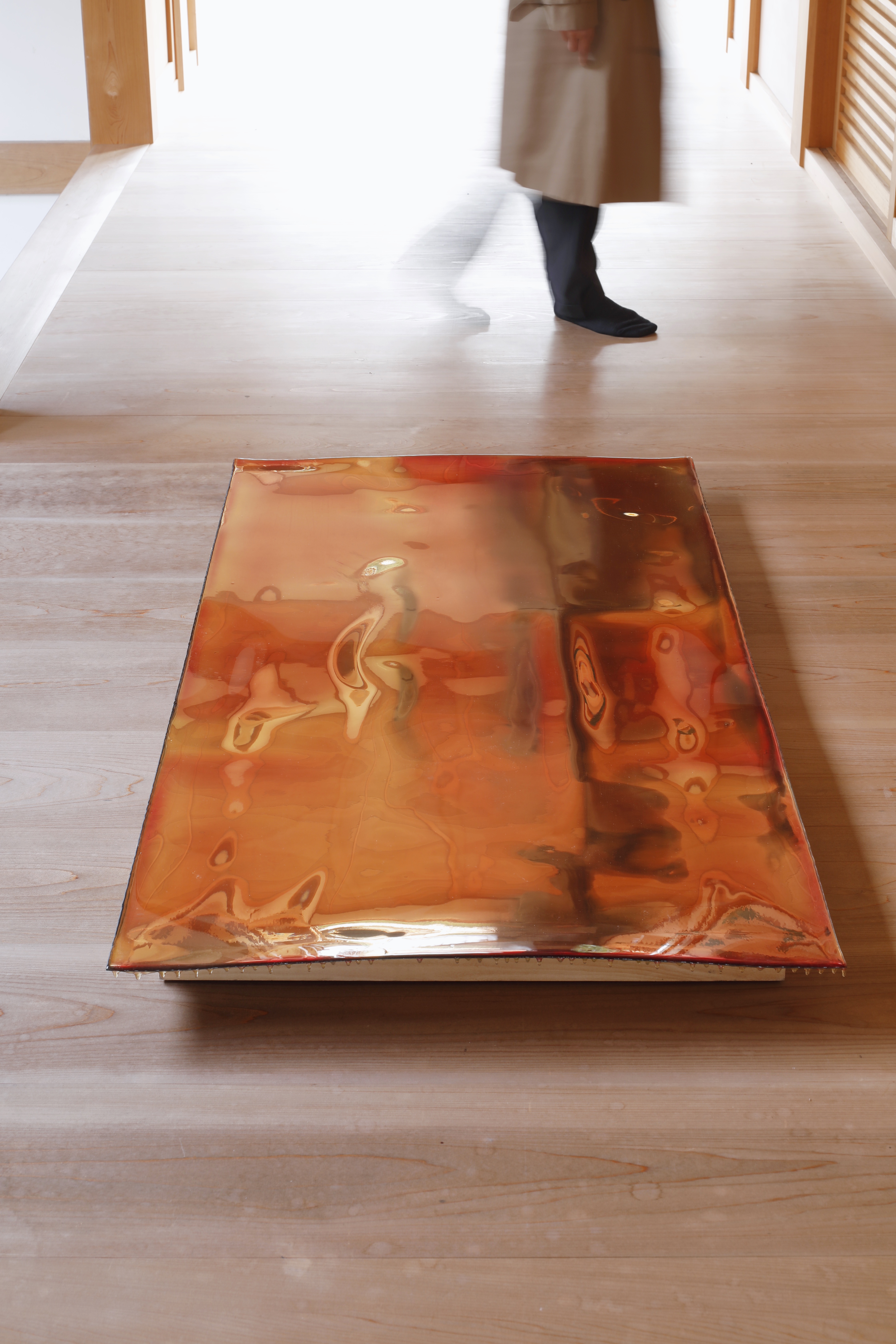
Carrie Yamaoka, Koolpop no.9 (ongoing), 2001/2025. Epoxy resin and mixed media on reflective polyester film, 132.7 x 75.6 cm; 52 ¼ x 29 ¾ in
Installation view of “Inside Out/Outside In”, Manshu-in Temple, Kyoto, Japan. Photo by Takeru Koroda.
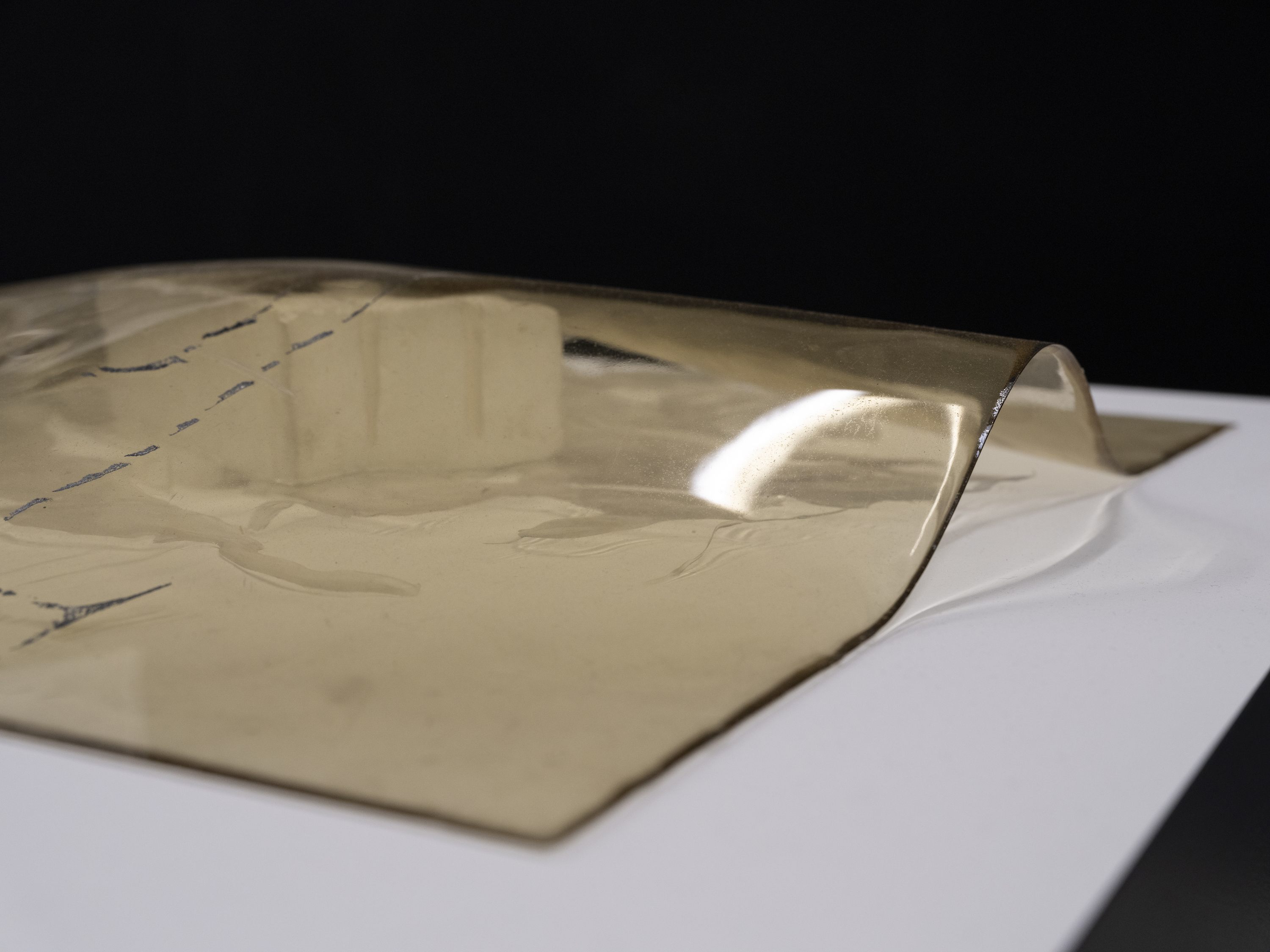
Foam block, urethane resin, epoxy resin, traces of reflective polyester film
24 x 24 x 5 in.
Installation view, “arms ache avid aeon: Nancy Brooks Brody / Joy Episalla / Zoe Leonard / Carrie Yamaoka: fierce pussy amplified: Chapter Eight”, Curated by Jo-ey Tang, Participant Inc, New York, 2025.
Image courtesy of Participant Inc. Photo by Studio Kukla.

Digital inkjet print on
synthetic chiffon, wood panel
Approx. 68 x 35 x 7 in.
Installation view, “arms ache avid aeon: Nancy Brooks Brody / Joy Episalla / Zoe Leonard / Carrie Yamaoka: fierce pussy amplified: Chapter Eight”, Curated by Jo-ey Tang, Participant Inc, New York, 2025.
Image courtesy of Participant Inc. Photo by Studio Kukla.
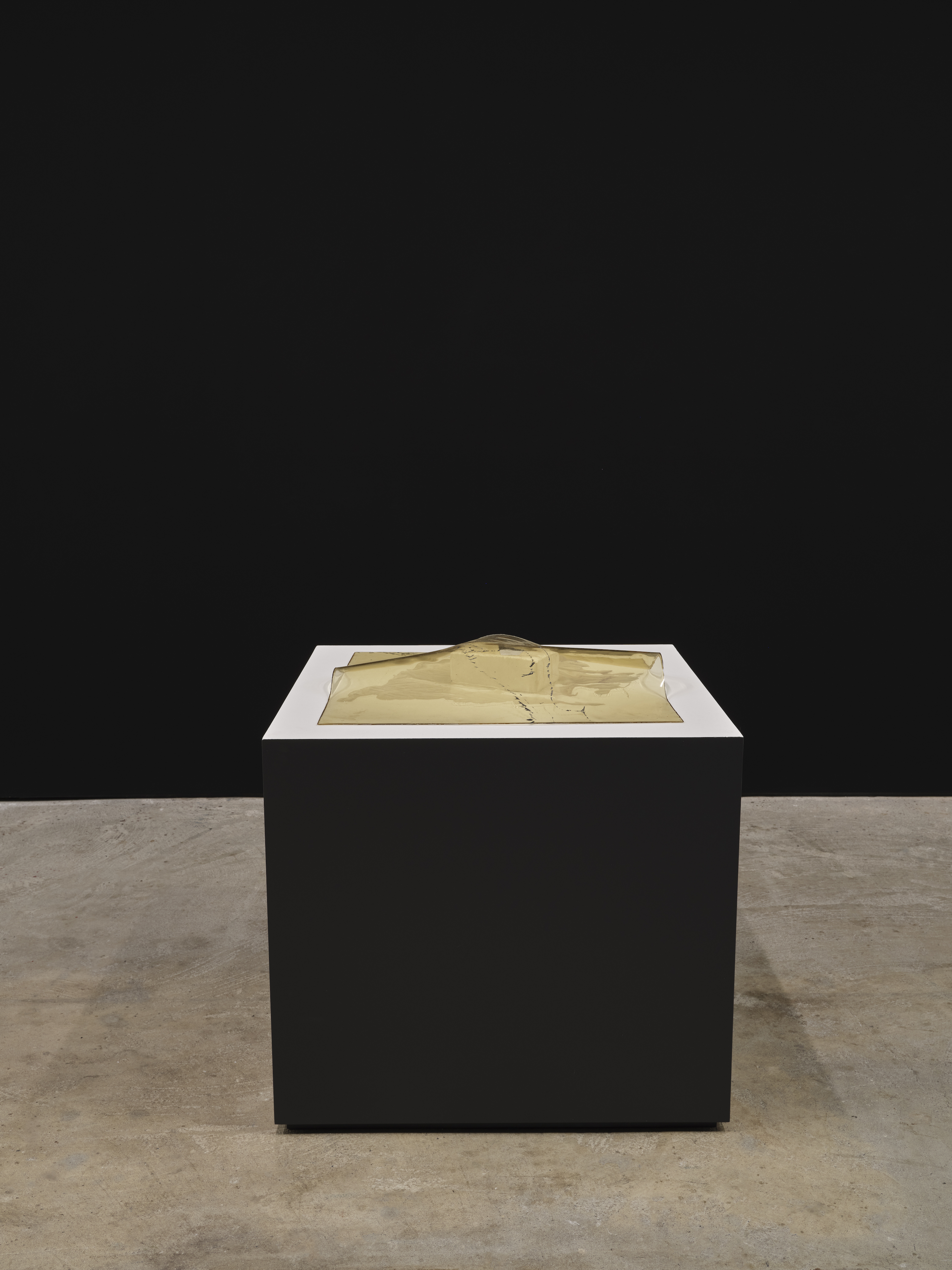
Foam block, urethane resin, epoxy resin, traces of reflective polyester film
24 x 24 x 5 in.
Installation view, “arms ache avid aeon: Nancy Brooks Brody / Joy Episalla / Zoe Leonard / Carrie Yamaoka: fierce pussy amplified: Chapter Eight”, Curated by Jo-ey Tang, Participant Inc, New York, 2025.
Image courtesy of Participant Inc. Photo by Studio Kukla.
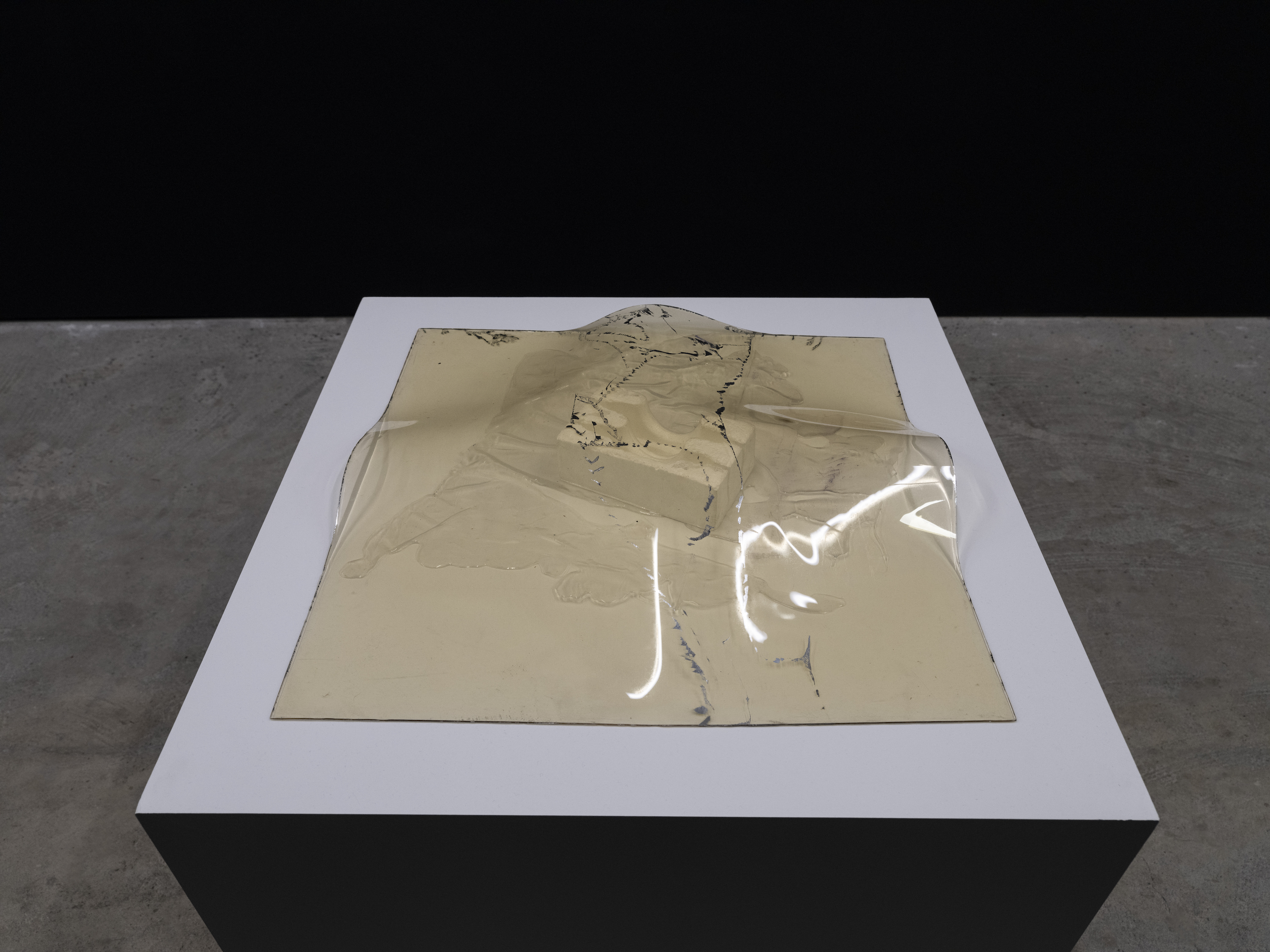
Foam block, urethane resin, epoxy resin, traces of reflective polyester film
24 x 24 x 5 in.
Installation view, “arms ache avid aeon: Nancy Brooks Brody / Joy Episalla / Zoe Leonard / Carrie Yamaoka: fierce pussy amplified: Chapter Eight”, Curated by Jo-ey Tang, Participant Inc, New York, 2025.
Image courtesy of Participant Inc. Photo by Studio Kukla.
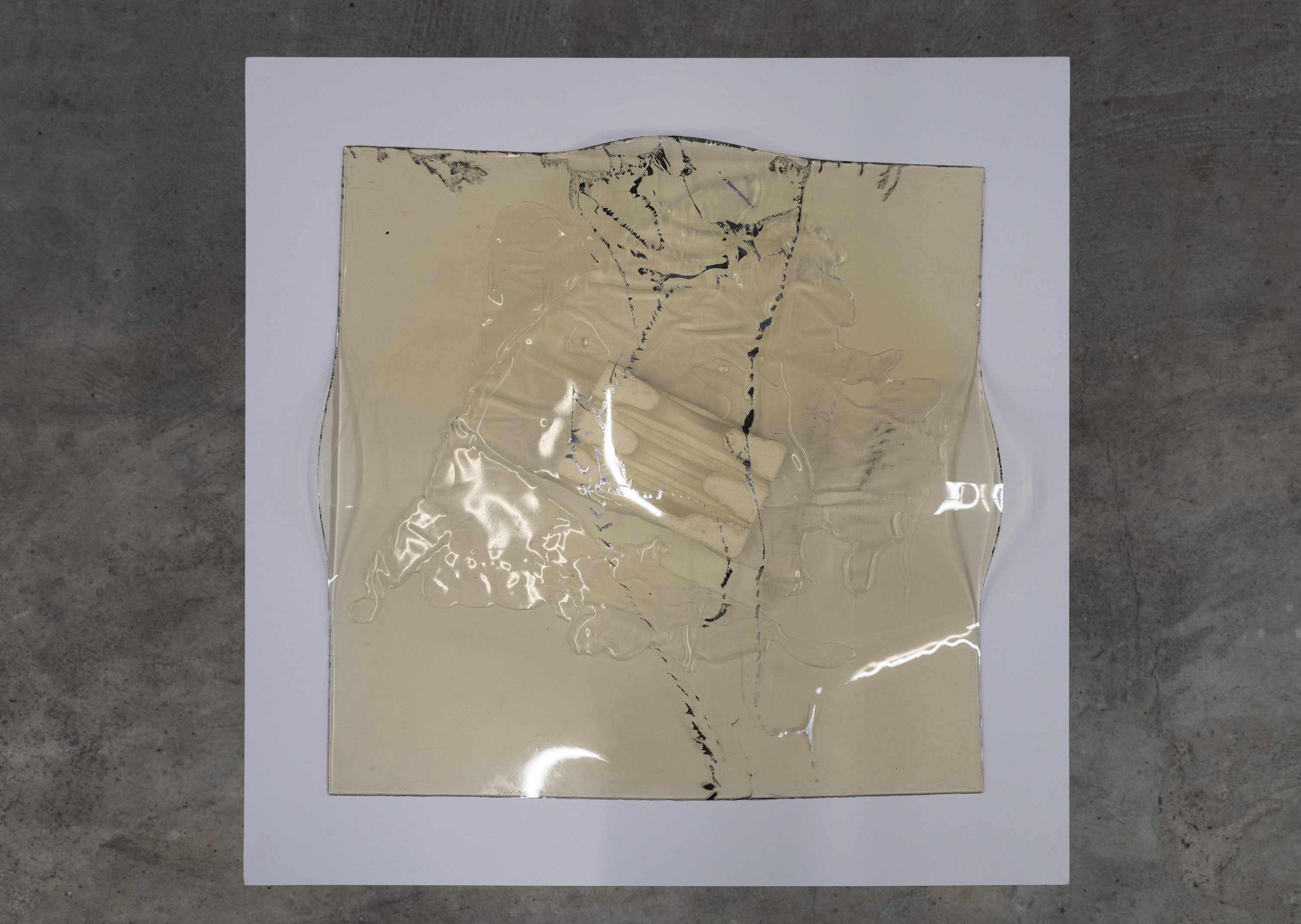
Foam block, urethane resin, epoxy resin, traces of reflective polyester film
24 x 24 x 5 in.
Installation view, “arms ache avid aeon: Nancy Brooks Brody / Joy Episalla / Zoe Leonard / Carrie Yamaoka: fierce pussy amplified: Chapter Eight”, Curated by Jo-ey Tang, Participant Inc, New York, 2025.
Image courtesy of Participant Inc. Photo by Studio Kukla.
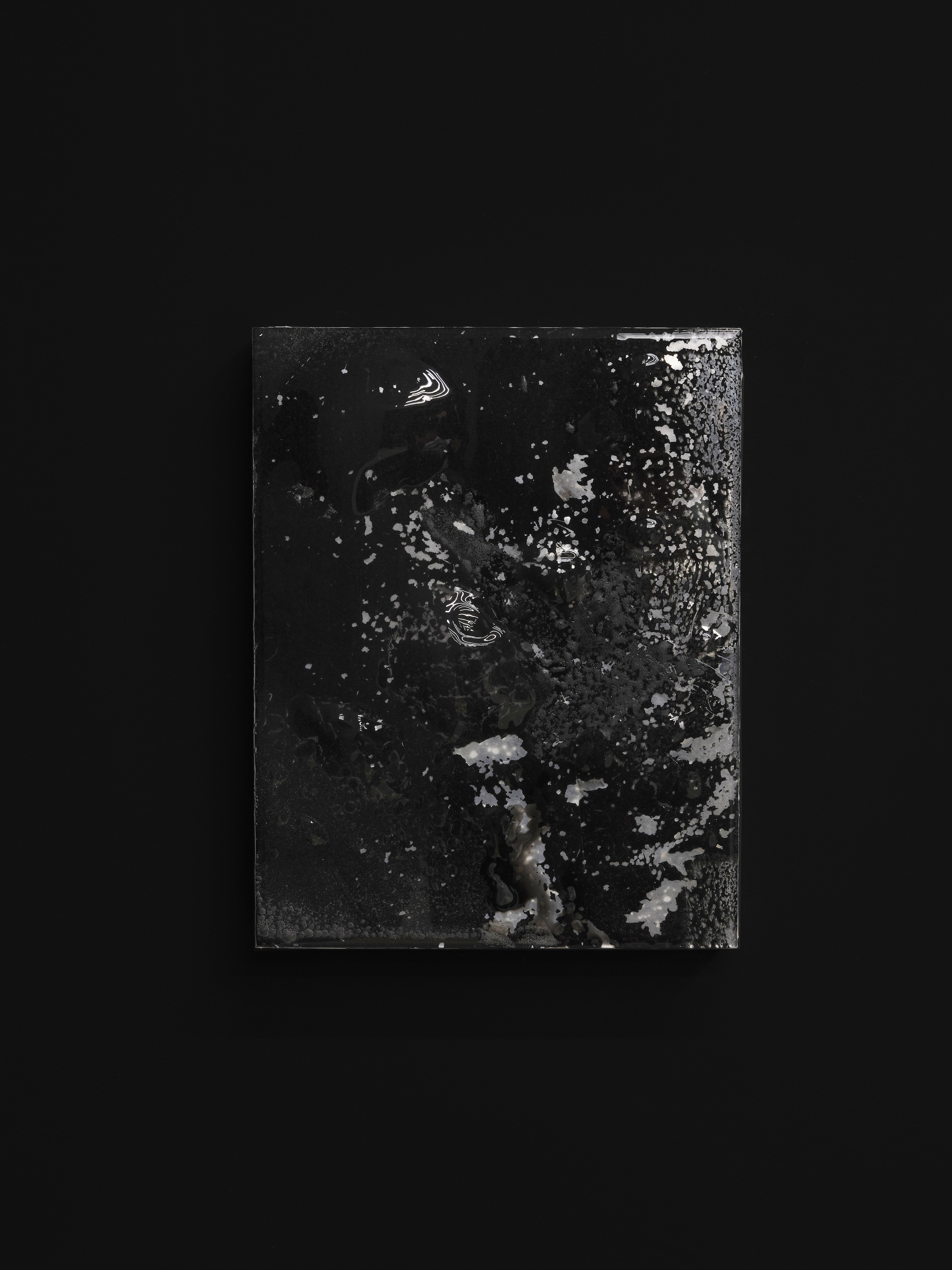
Reflective polyester film, urethane resin and mixed media on wood panel
14 x 11 in (35.6 x 27.9 cm)
Installation view, “arms ache avid aeon: Nancy Brooks Brody / Joy Episalla / Zoe Leonard / Carrie Yamaoka: fierce pussy amplified: Chapter Eight”, Curated by Jo-ey Tang, Participant Inc, New York, 2025.
Image courtesy of Participant Inc. Photo by Studio Kukla.

Installation view, “arms ache avid aeon: Nancy Brooks Brody / Joy Episalla / Zoe Leonard / Carrie Yamaoka: fierce pussy amplified: Chapter Eight”, Curated by Jo-ey Tang, Participant Inc, New York, 2025.
Image courtesy of Participant Inc. Photo by Studio Kukla.
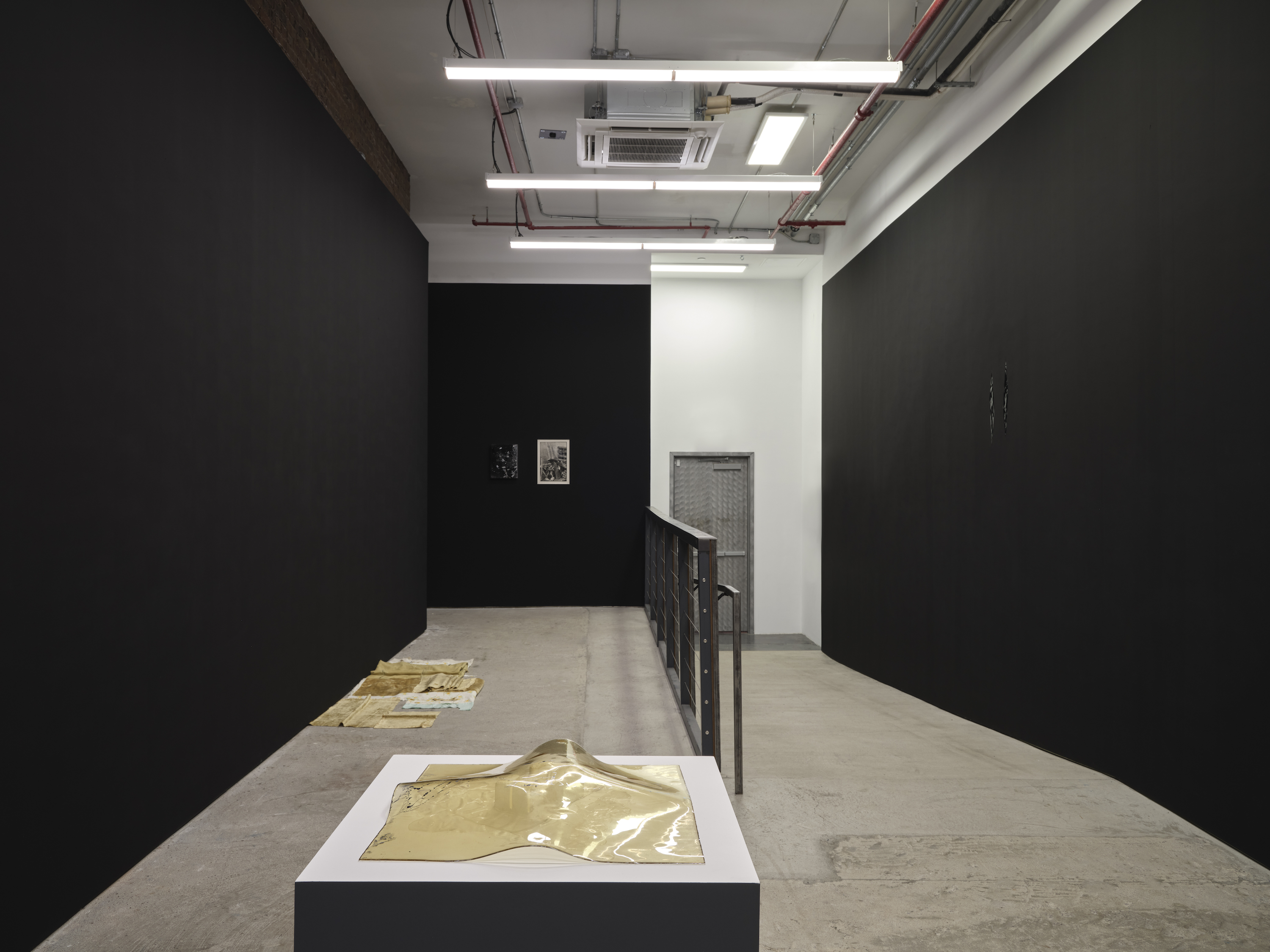
Installation view, “arms ache avid aeon: Nancy Brooks Brody / Joy Episalla / Zoe Leonard / Carrie Yamaoka: fierce pussy amplified: Chapter Eight”, Curated by Jo-ey Tang, Participant Inc, New York, 2025.
Image courtesy of Participant Inc. Photo by Studio Kukla.

‘lucid / liquid / limpid’, Kiang Malingue, Hong Kong, 2024

‘lucid / liquid / limpid’, Kiang Malingue, Hong Kong, 2024

Reflective polyester film, urethane resin and mixed media on wood panel
72 x 45 in (182.9 x 114.3 cm)
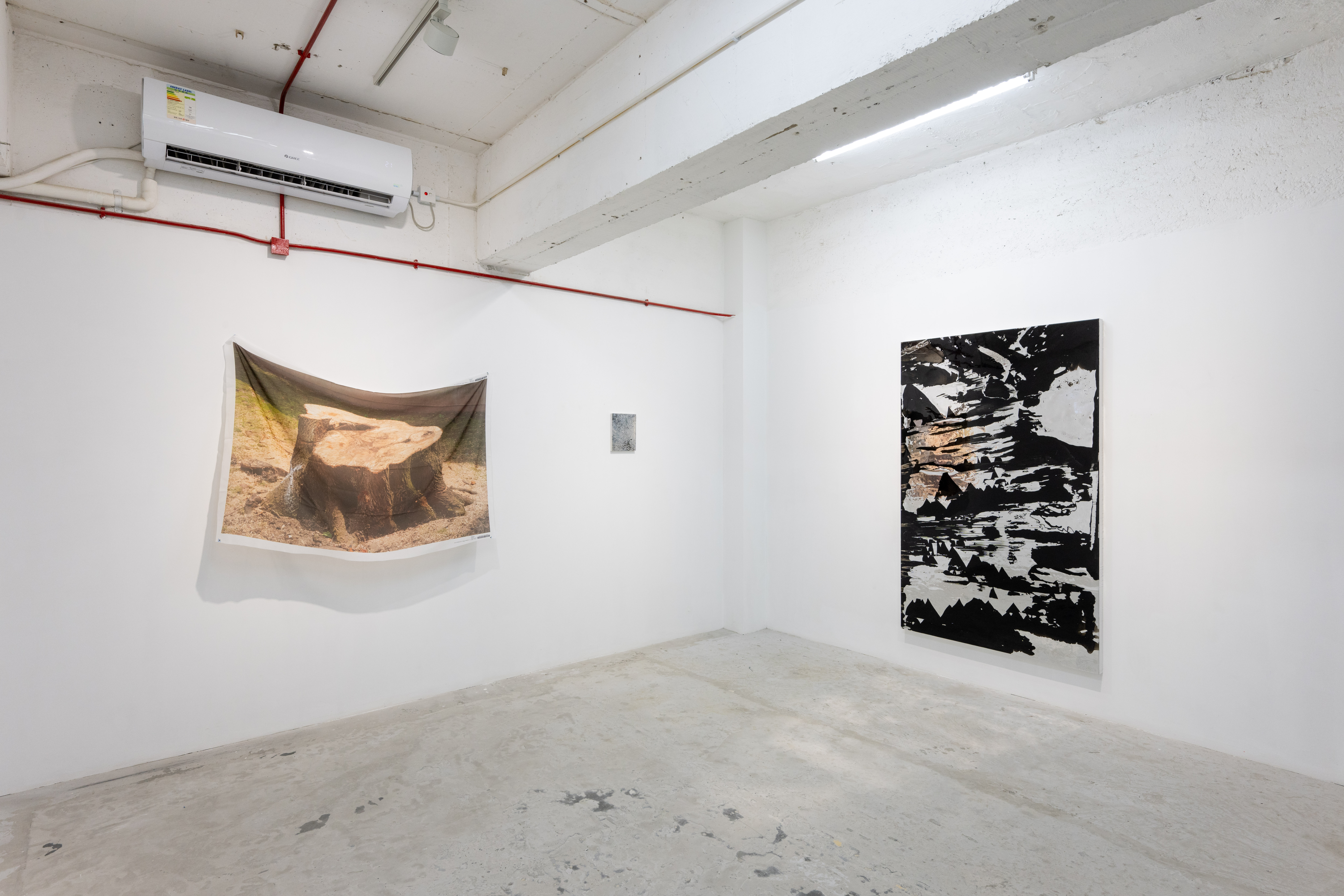
‘lucid / liquid / limpid’, Kiang Malingue, Hong Kong, 2024
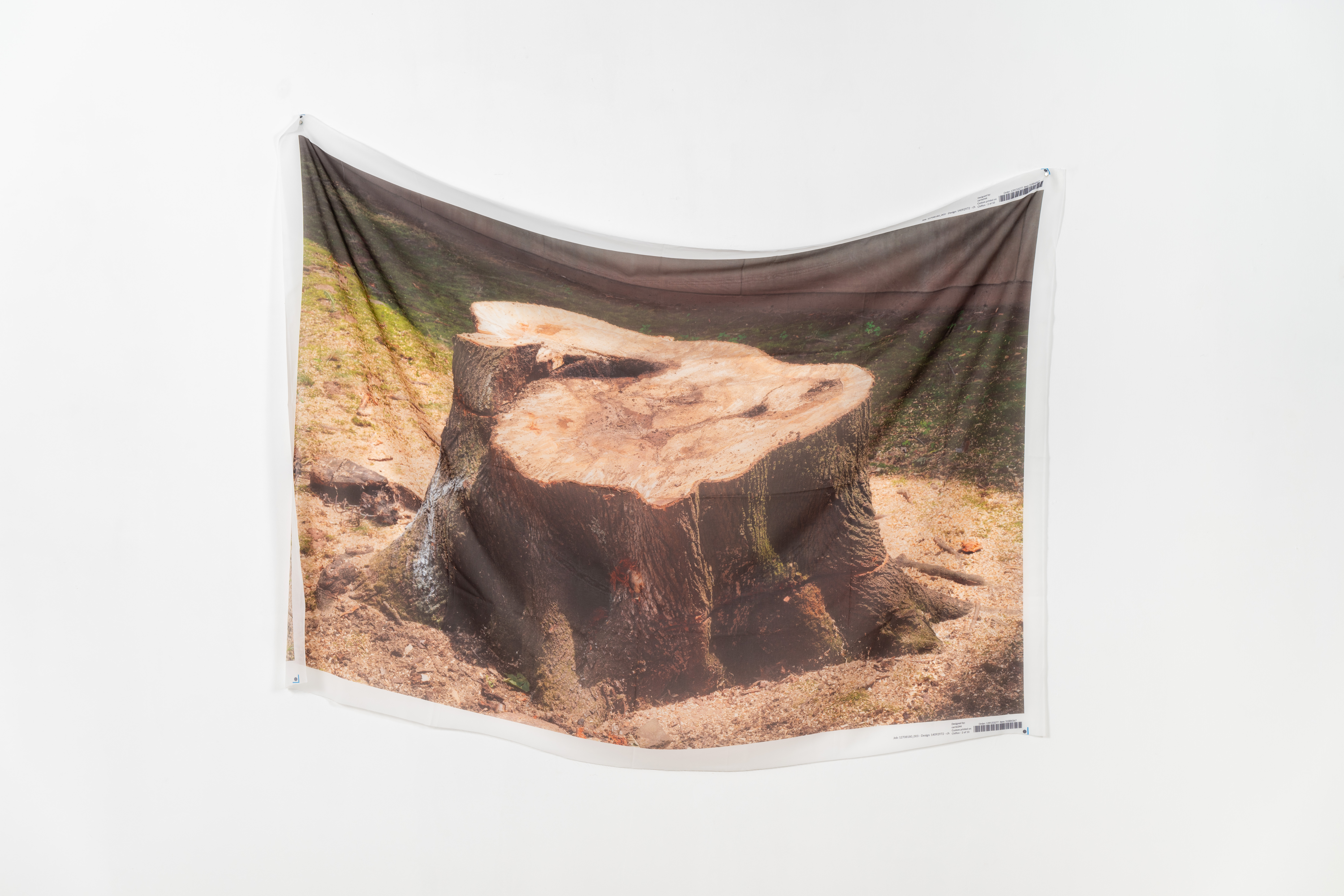
Digital print on synthetic chiffon
36 x 54 in (flat)
91.4 x 137.2 cm (flat)
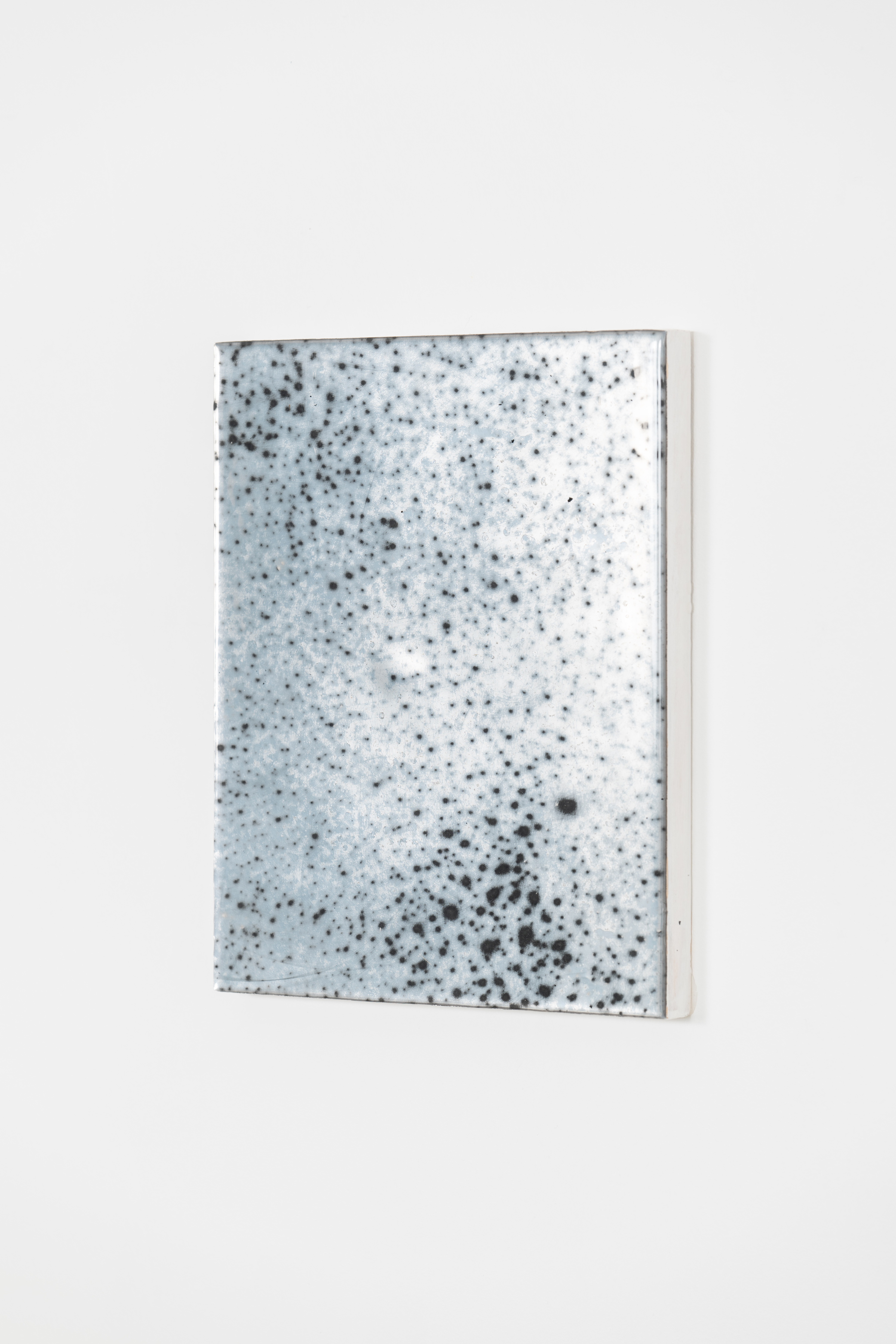
Reflective polyester film, urethane resin and mixed media on wood panel
10 x 8 in (25.4 x 20.3 cm)
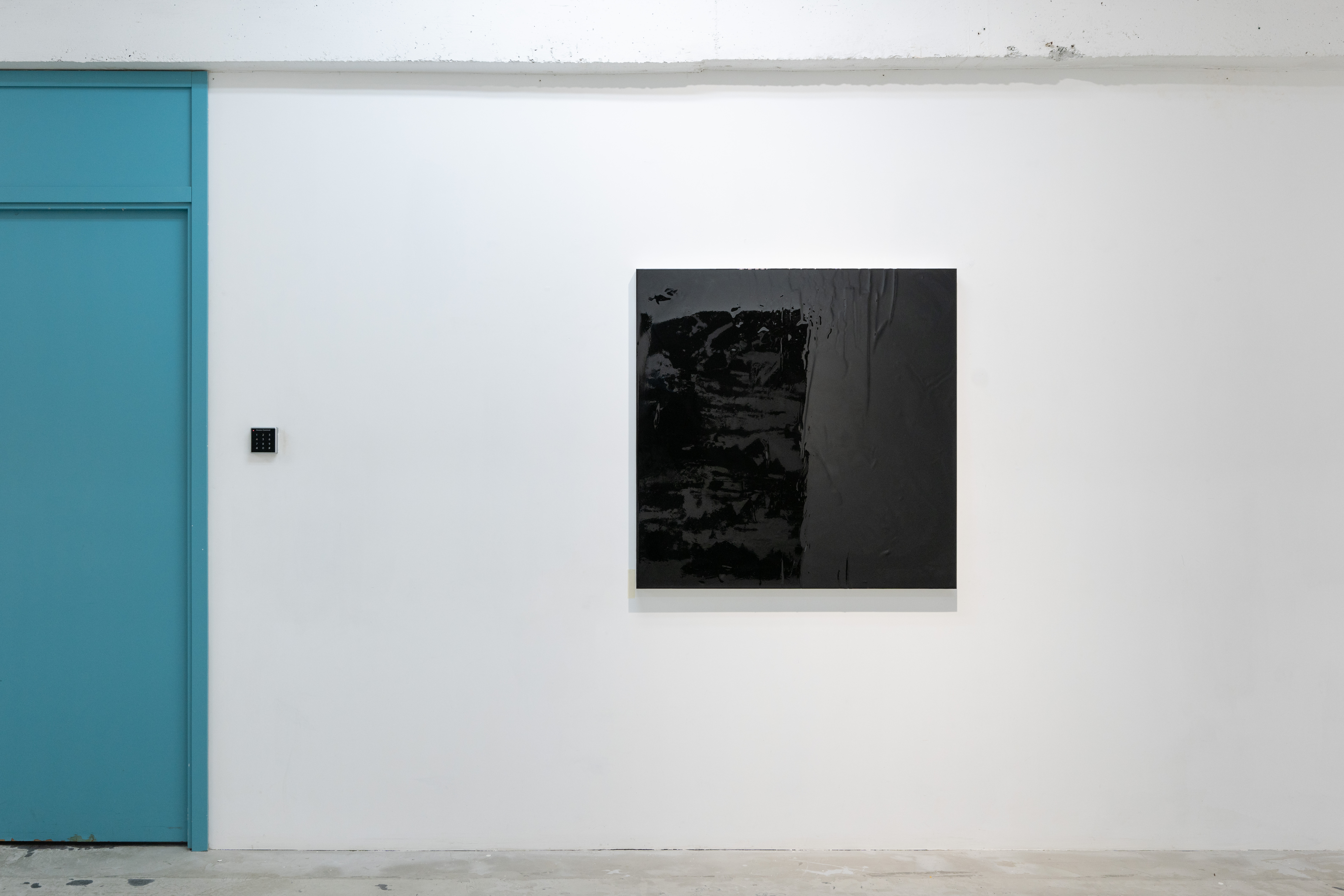
‘lucid / liquid / limpid’, Kiang Malingue, Hong Kong, 2024
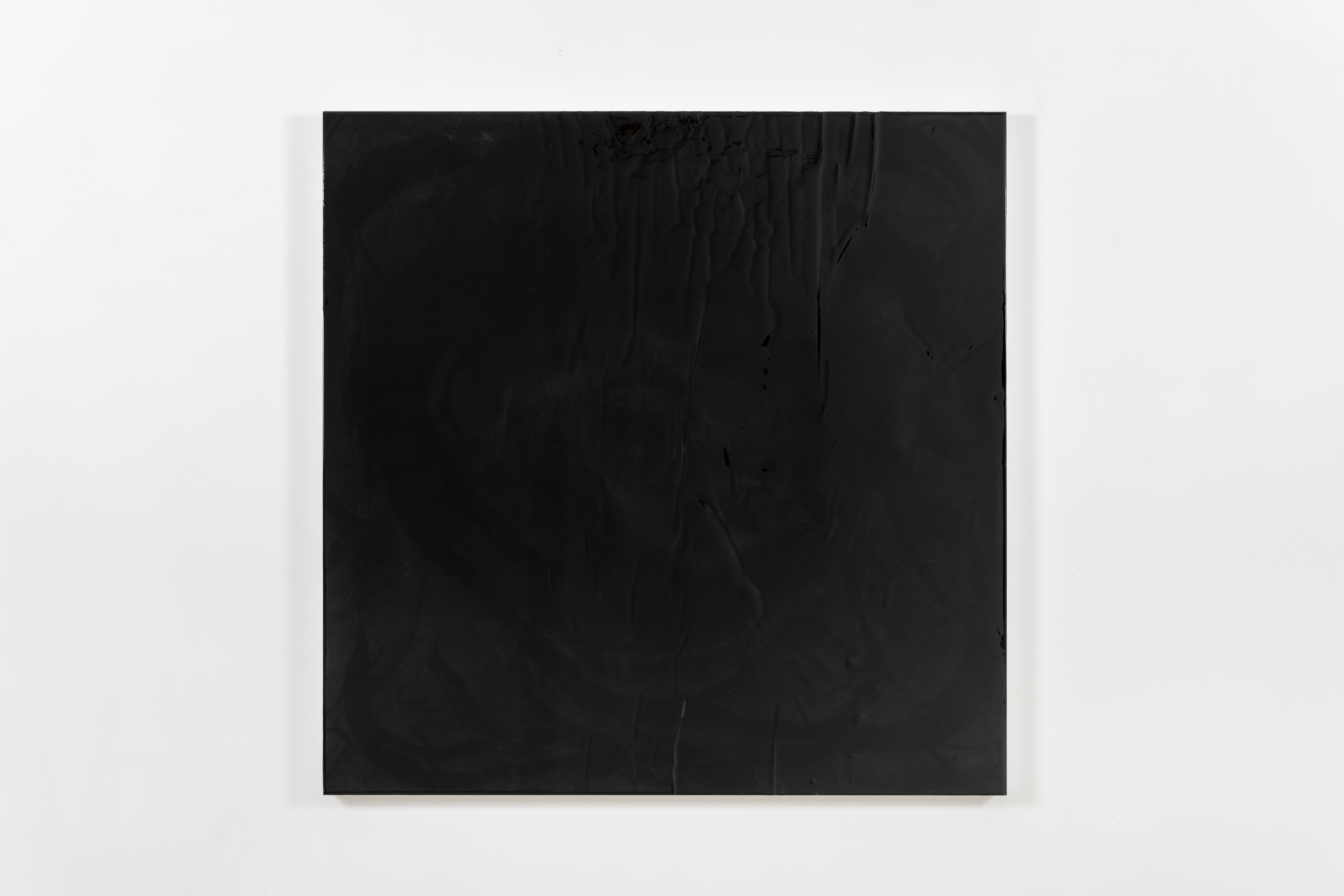
Black vinyl film and urethane resin on wood panel
40 x 40 in (101.6 x 101.6 cm)
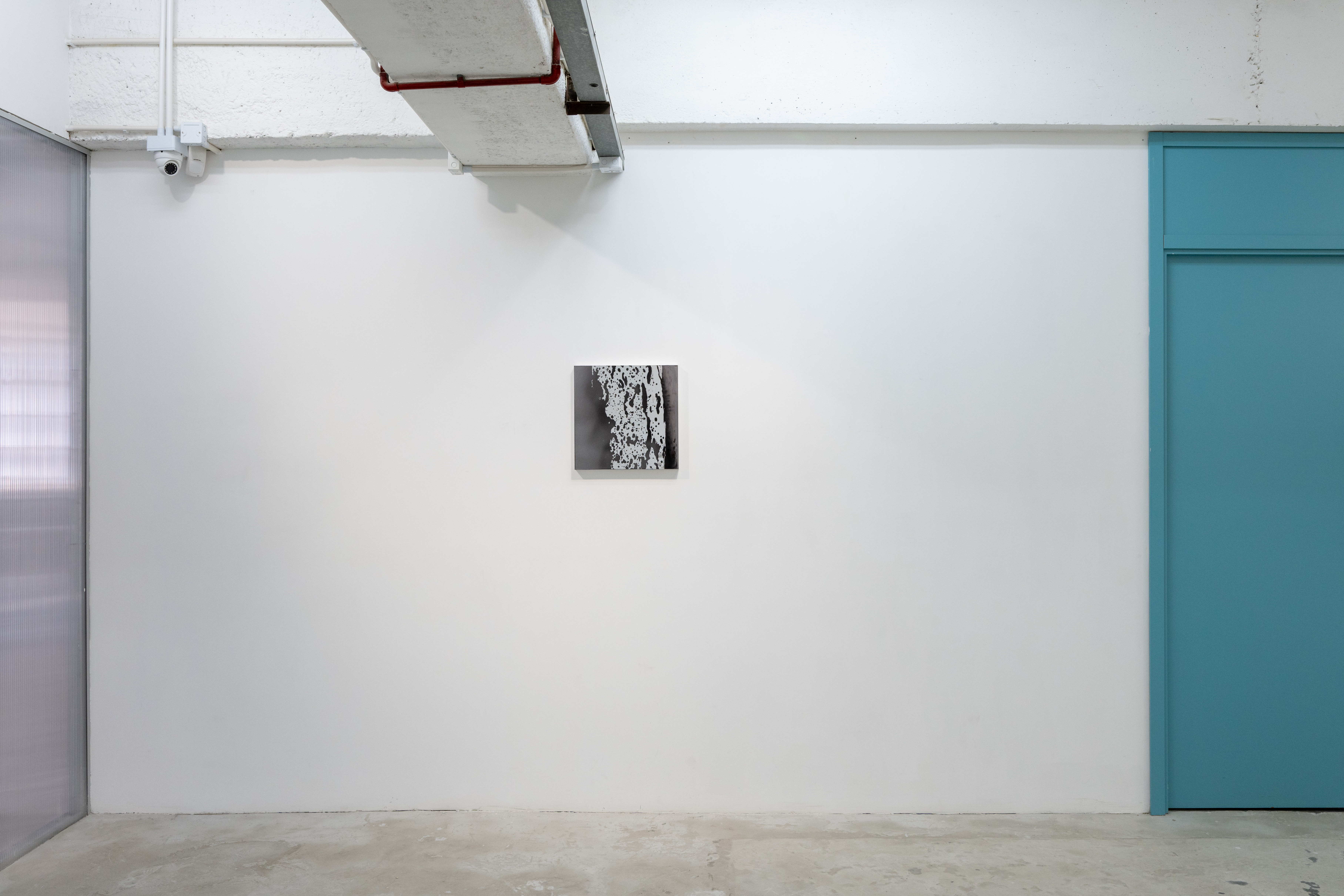
‘lucid / liquid / limpid’, Kiang Malingue, Hong Kong, 2024
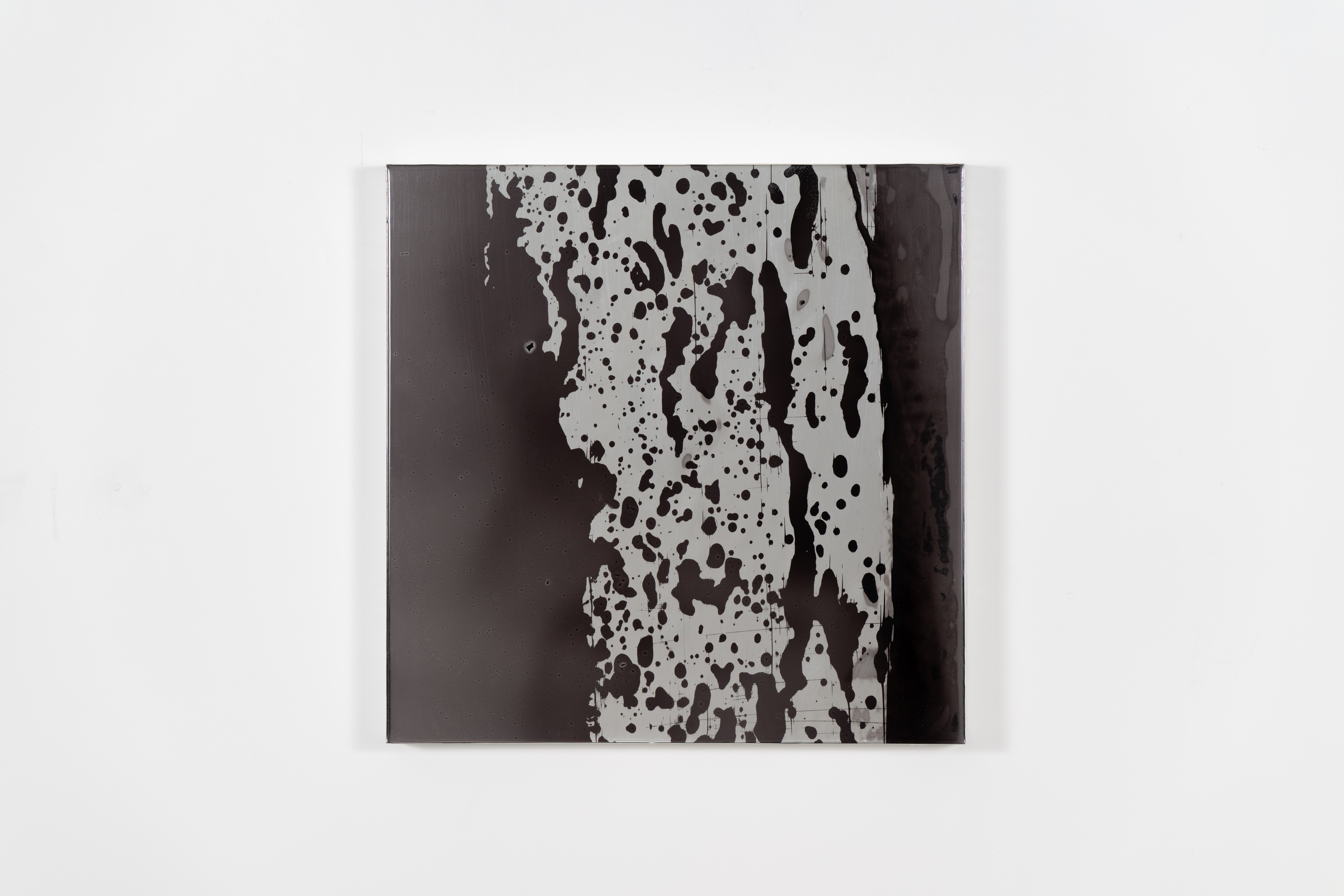
Reflective polyester film, urethane resin and mixed media on wood panel
15 x 15 in (38.1 x 38.1 cm)

‘lucid / liquid / limpid’, Kiang Malingue, Hong Kong, 2024

Urethane resin, black vinyl film and mixed media on wood panel
14 x 11 in (35.6 x 27.9 cm)

Reflective polyester film, urethane resin and mixed media on wood panel
20 x 16 in (50.8 x 40.6 cm)
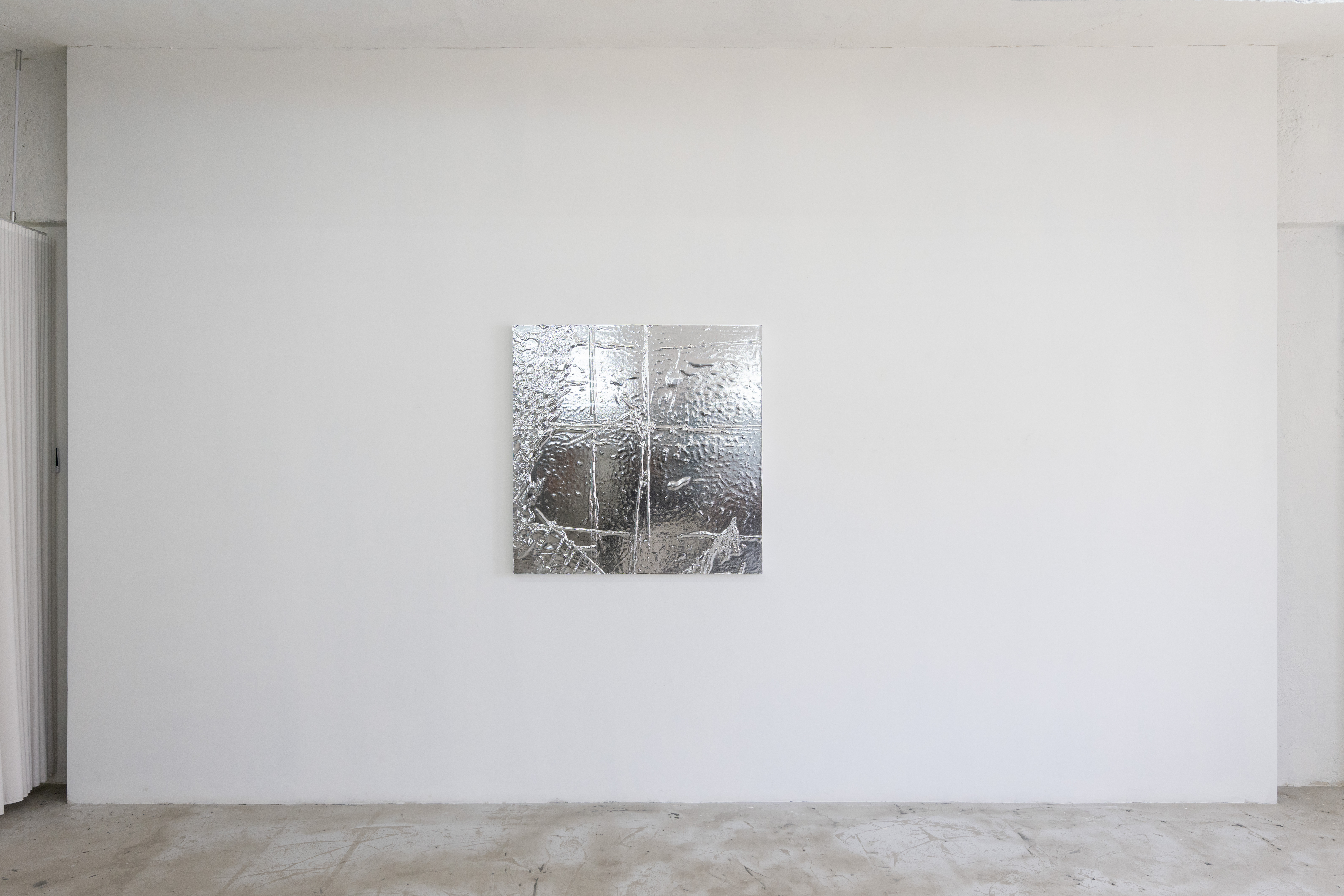
Silver vinyl film and urethane resin on wood panel
40 x 40 in (101.6 x 101.6 cm)
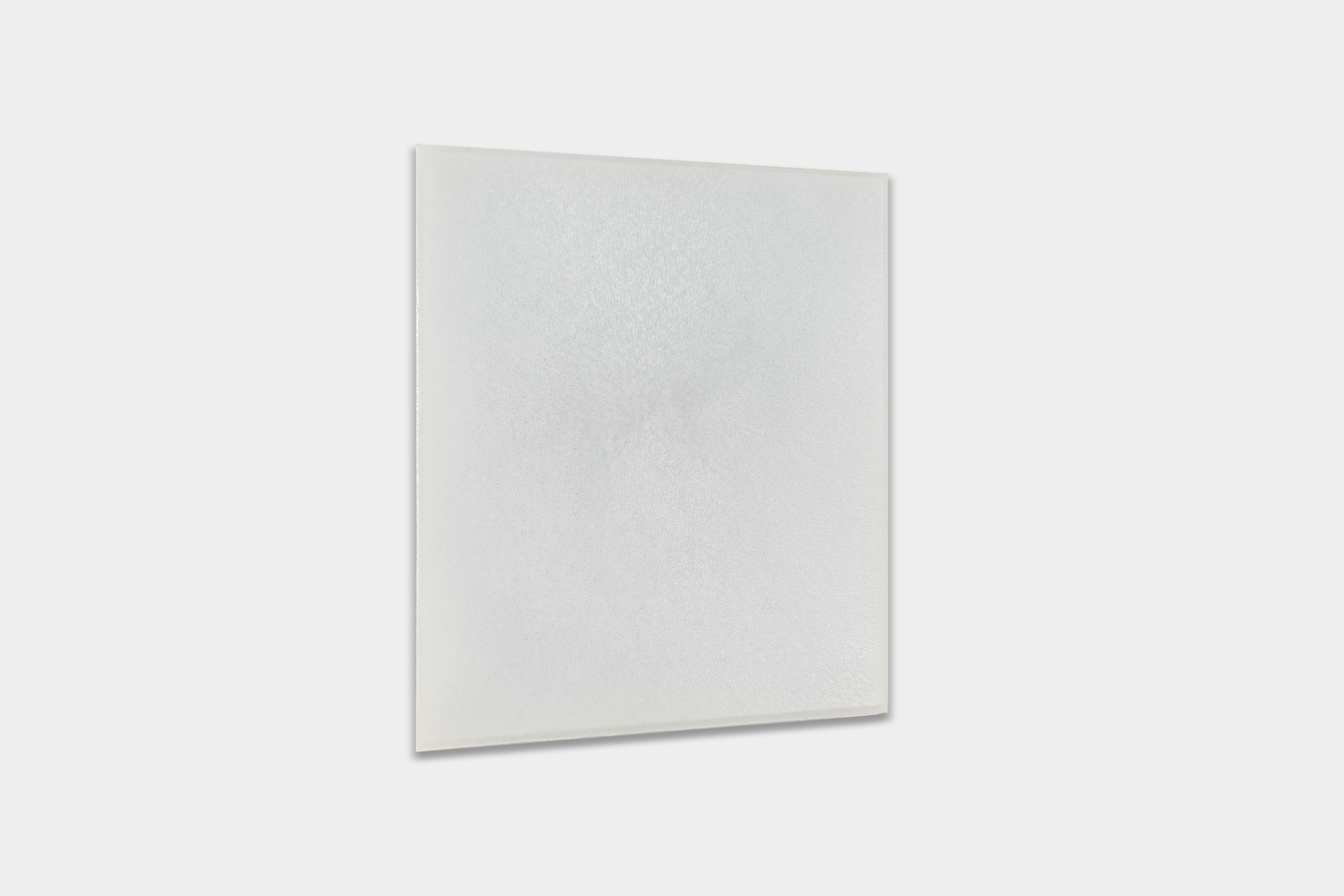
Cast flexible urethane resin, reflective polyester film and powdered pigment
14.125 x 11.625 in (35.9 x 29.5 cm)
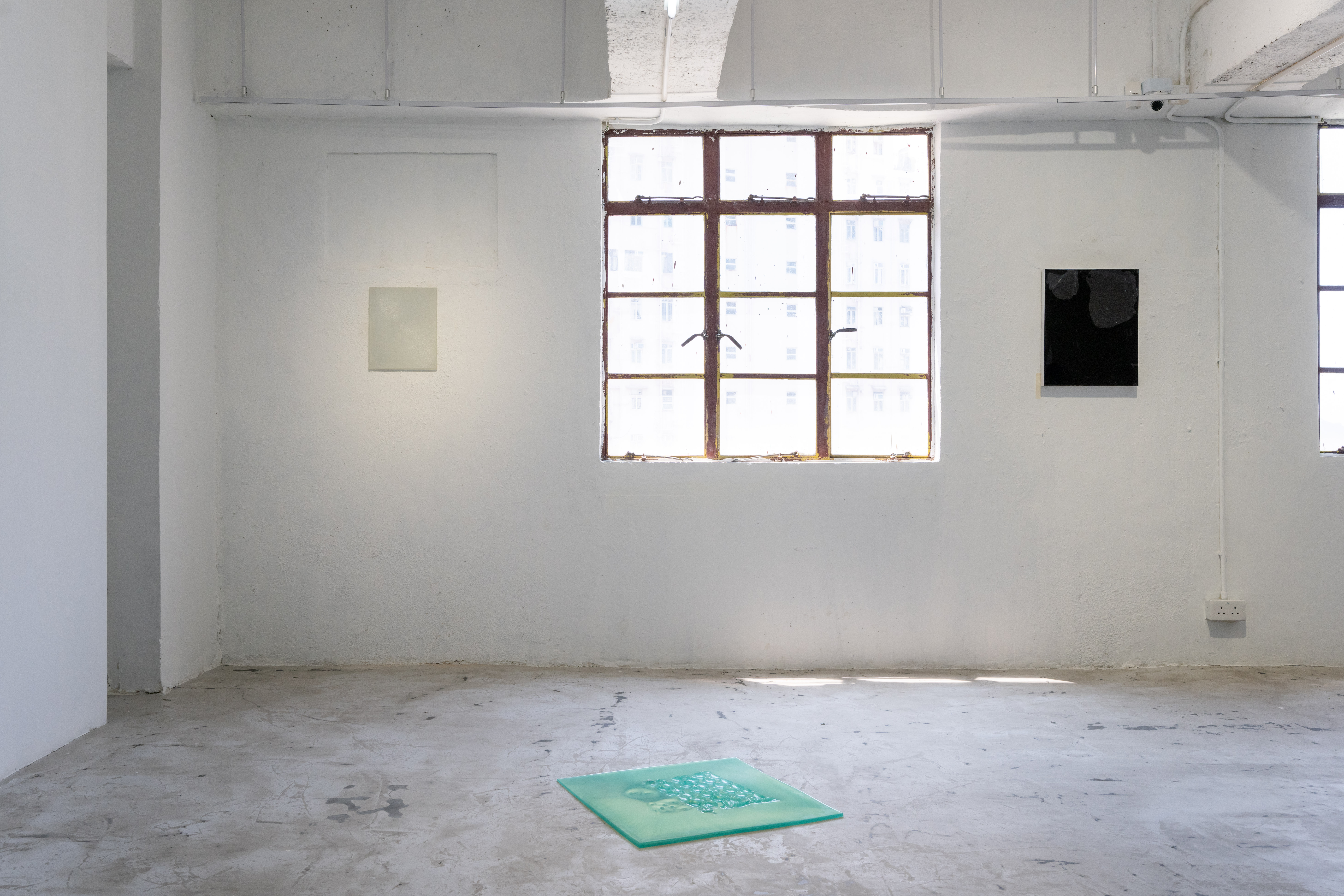
‘lucid / liquid / limpid’, Kiang Malingue, Hong Kong, 2024
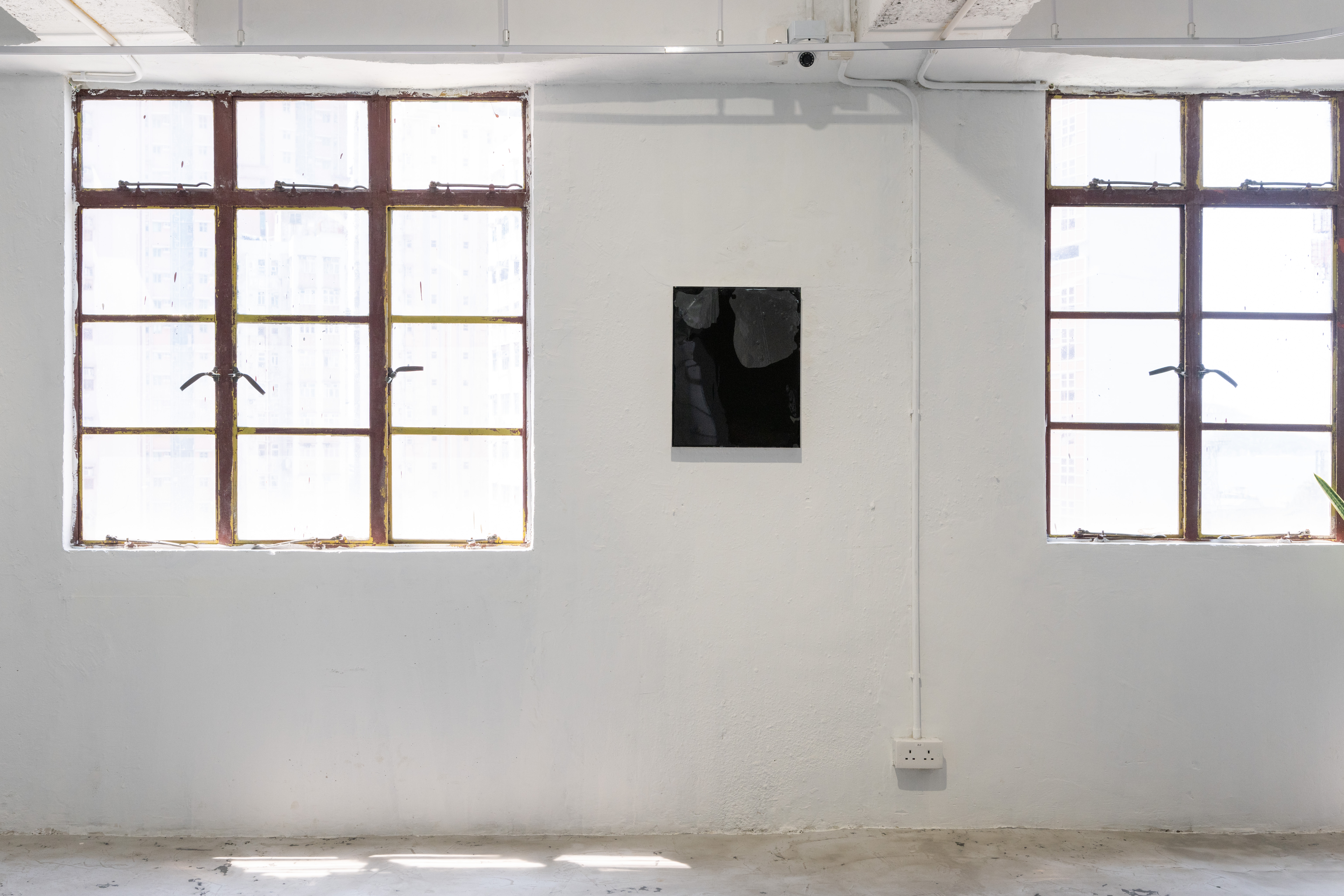
‘lucid / liquid / limpid’, Kiang Malingue, Hong Kong, 2024
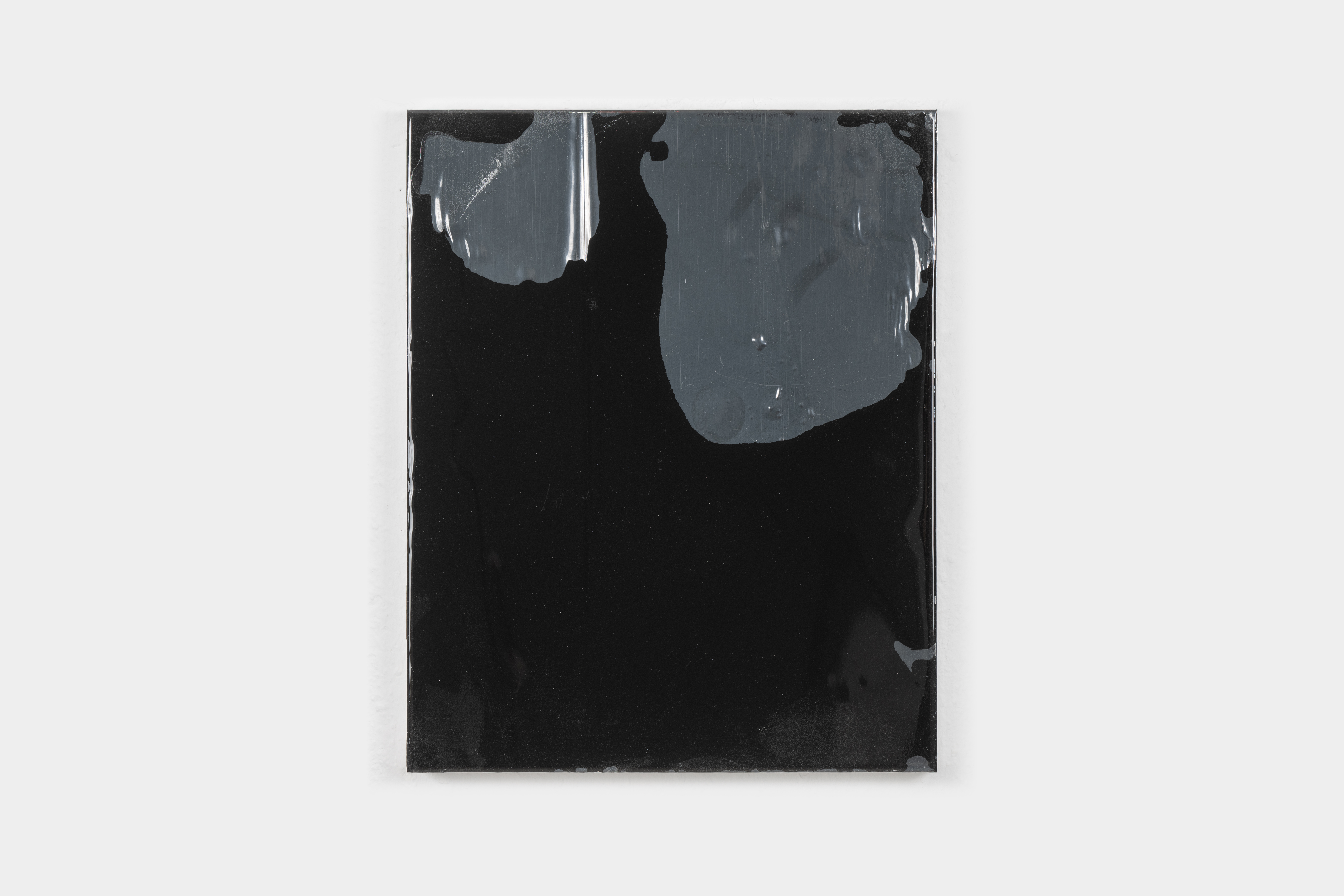
Black vinyl film and urethane resin on wood panel
20 x 16 in (50.8 x 40.6 cm)
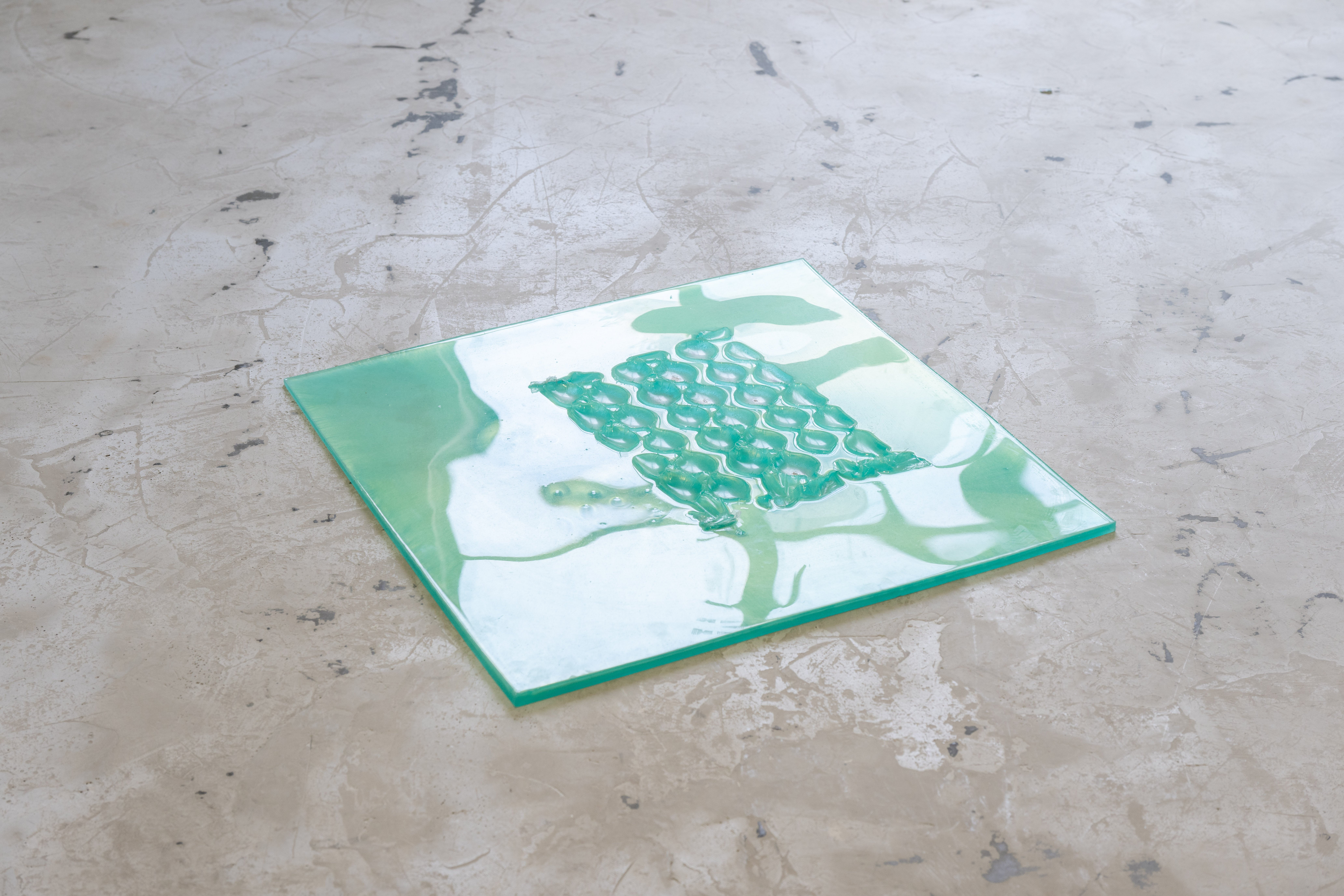
Cast flexible urethane resin and powdered pigment
24 x 24 in (61 x 61 cm)
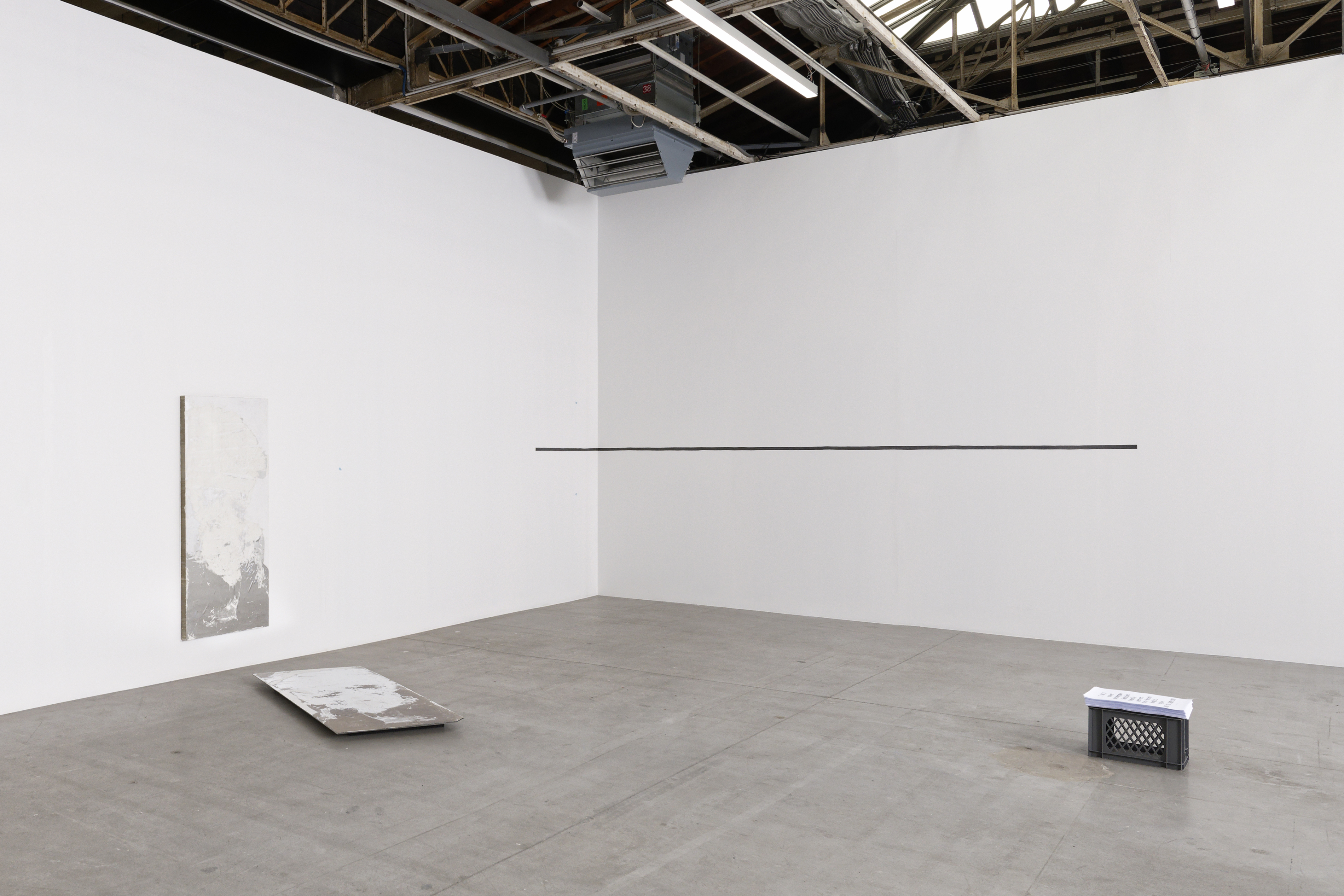
“Exposed”, Palais De Tokyo, Paris, France, 2023.
Image courtesy of Palais De Tokyo. Photo by Aurélien Mole.
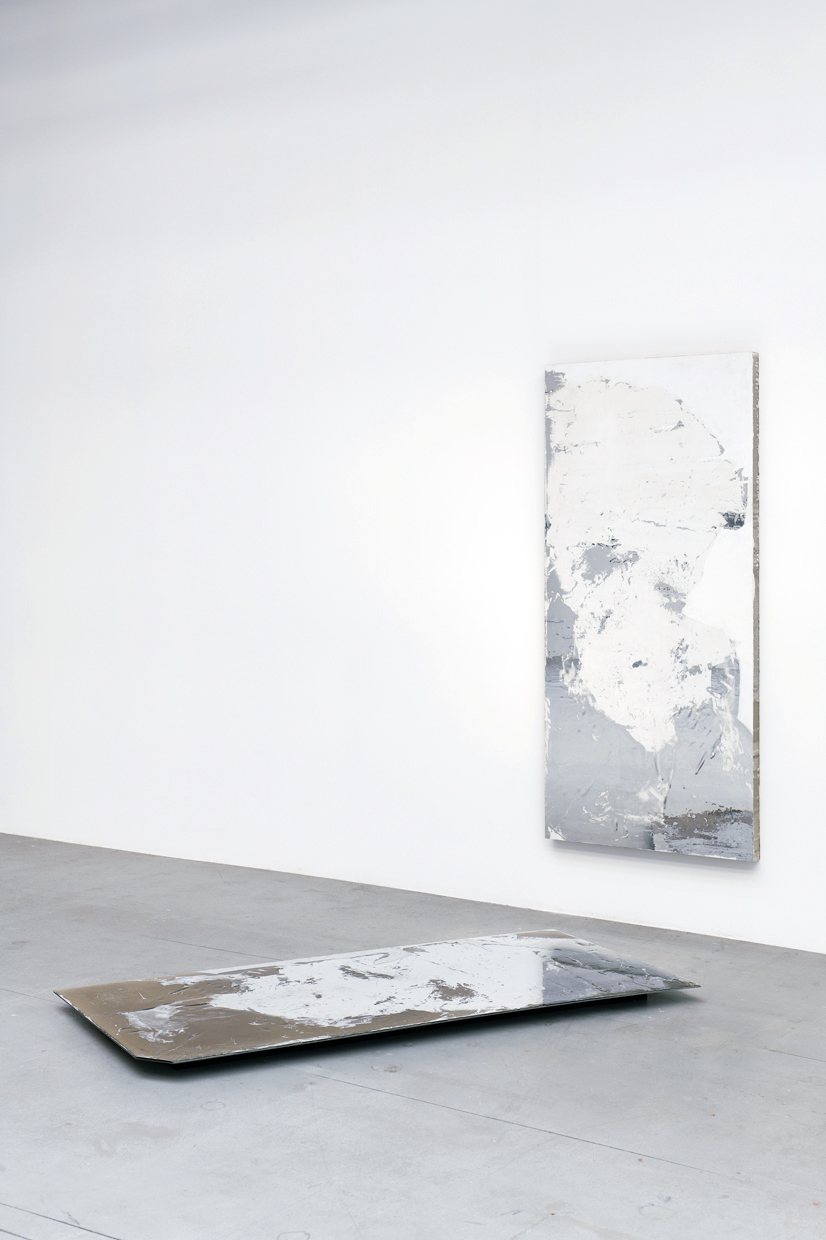
“Exposed”, Palais De Tokyo, Paris, France, 2023.
Image courtesy of the artist.
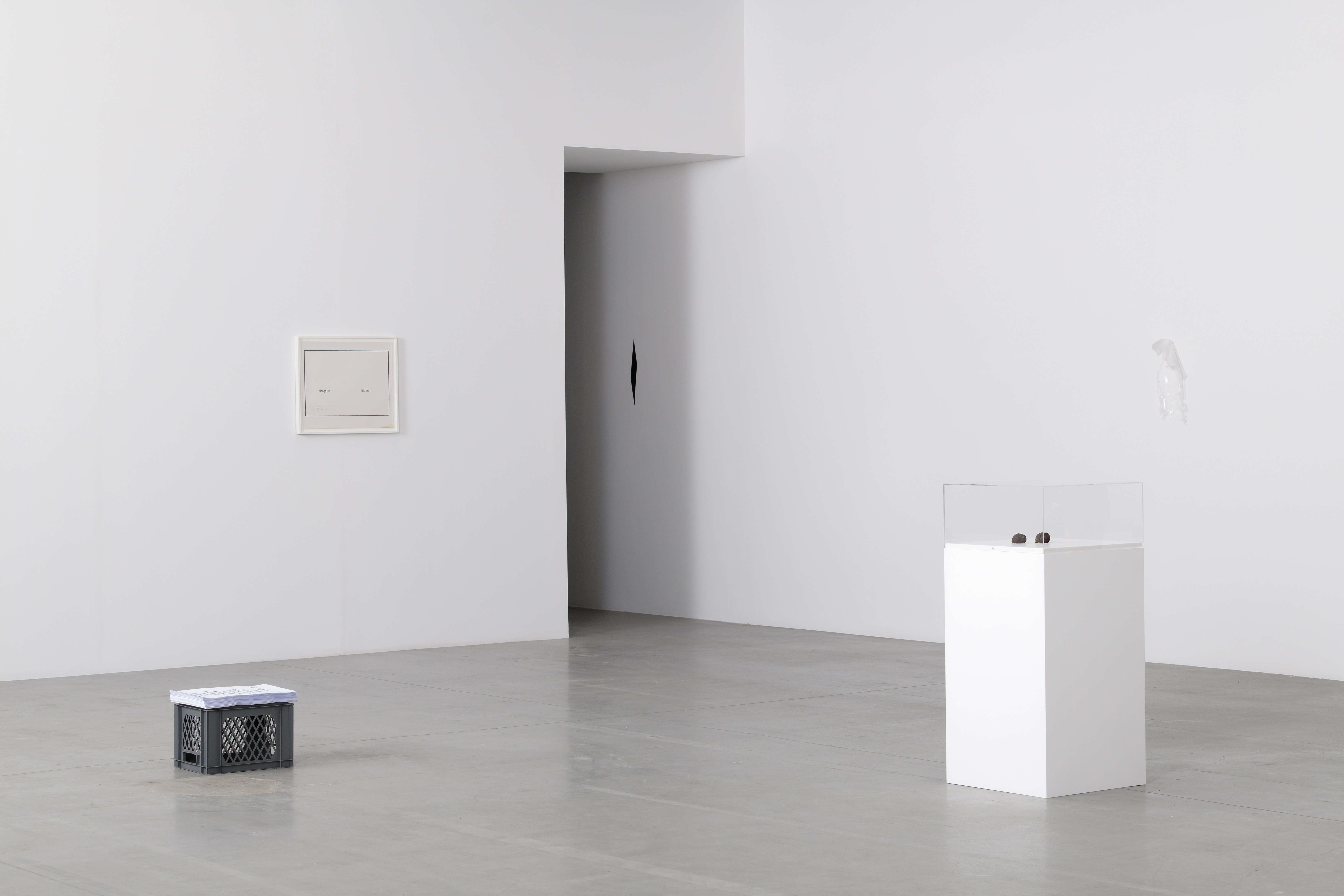
“Exposed”, Palais De Tokyo, Paris, France, 2023.
Image courtesy of Palais De Tokyo. Photo by Aurélien Mole.
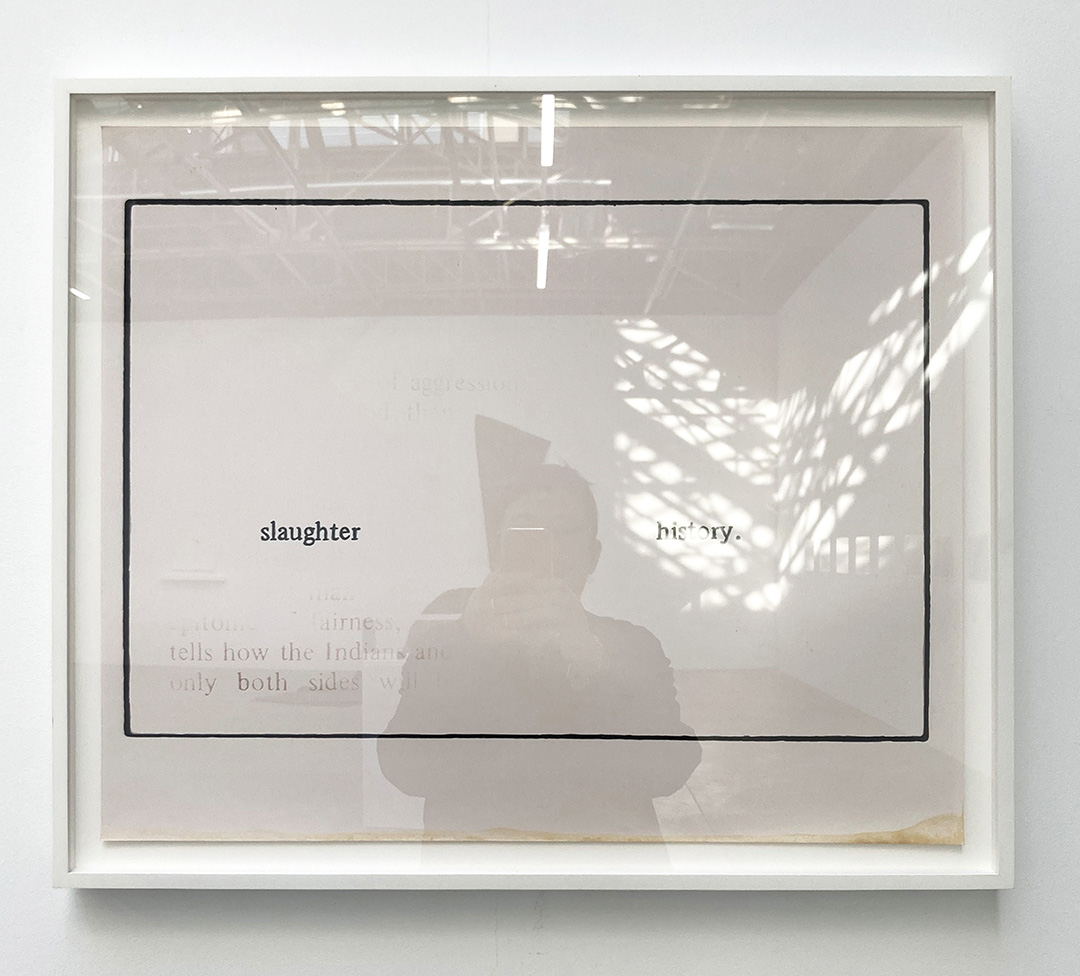
“Exposed”, Palais De Tokyo, Paris, France, 2023.
Image courtesy of the artist.

“Exposed”, Palais De Tokyo, Paris, France, 2023.
Image courtesy of the artist.